It’s rare for a company to have two architectural masterpieces to call home. And for both of those to be right next to each other. And for both of those to be within the City of London. But Lloyd’s Register has held such a privileged position for over 25 years.
In 2024, the organisation made the decision to consolidate. To move out of their Richard Rogers 2000 development, back into their original landmark home; the Grade II* listed Collcutt Building (completed 1901).
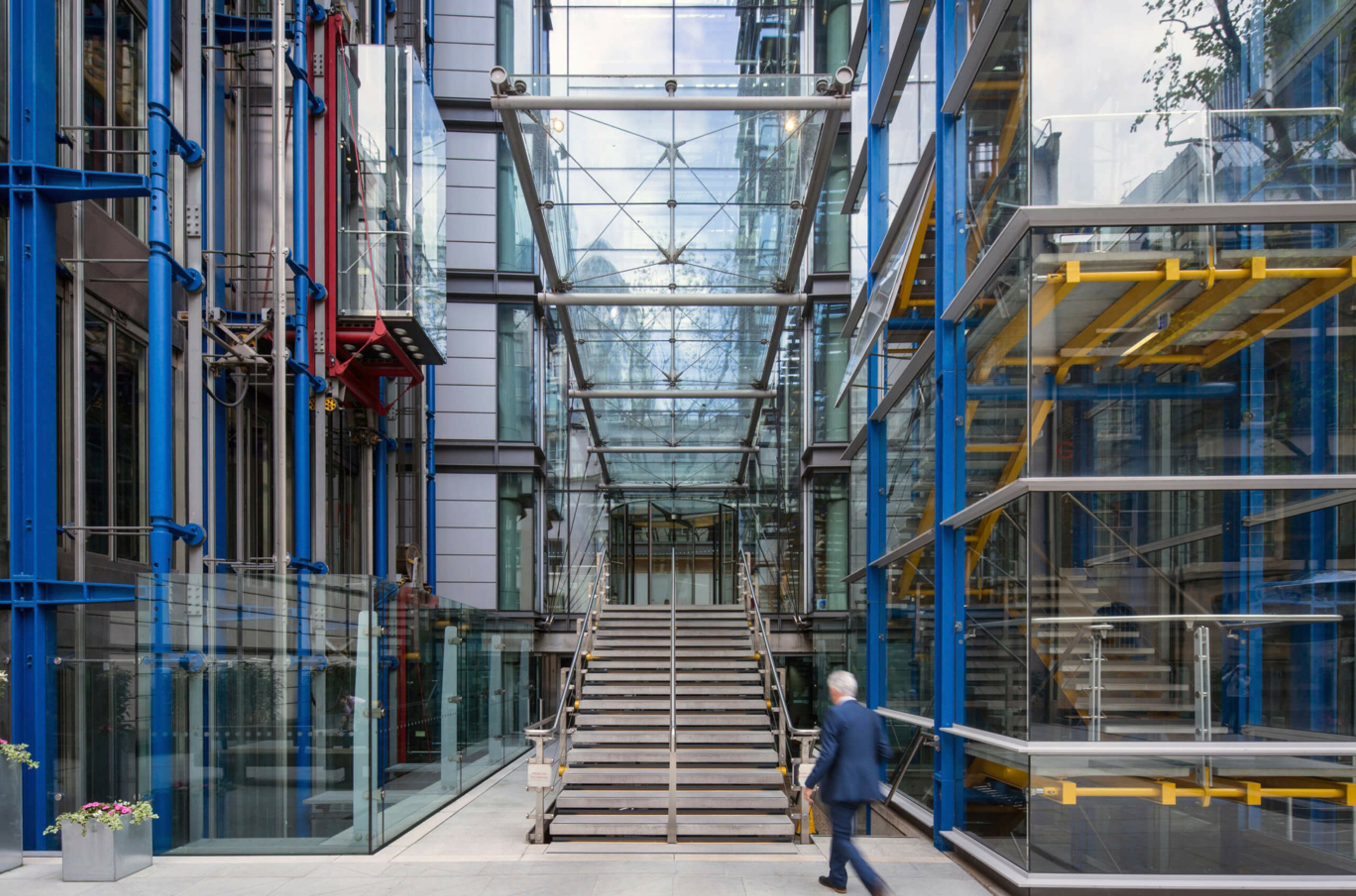
It’s rare for a company to have two architectural masterpieces to call home. And for both of those to be right next to each other. And for both of those to be within the City of London. But Lloyd’s Register has held such a privileged position for over 25 years.
In 2024, the organisation made the decision to consolidate. To move out of their Richard Rogers 2000 development, back into their original landmark home; the Grade II* listed Collcutt Building (completed 1901).
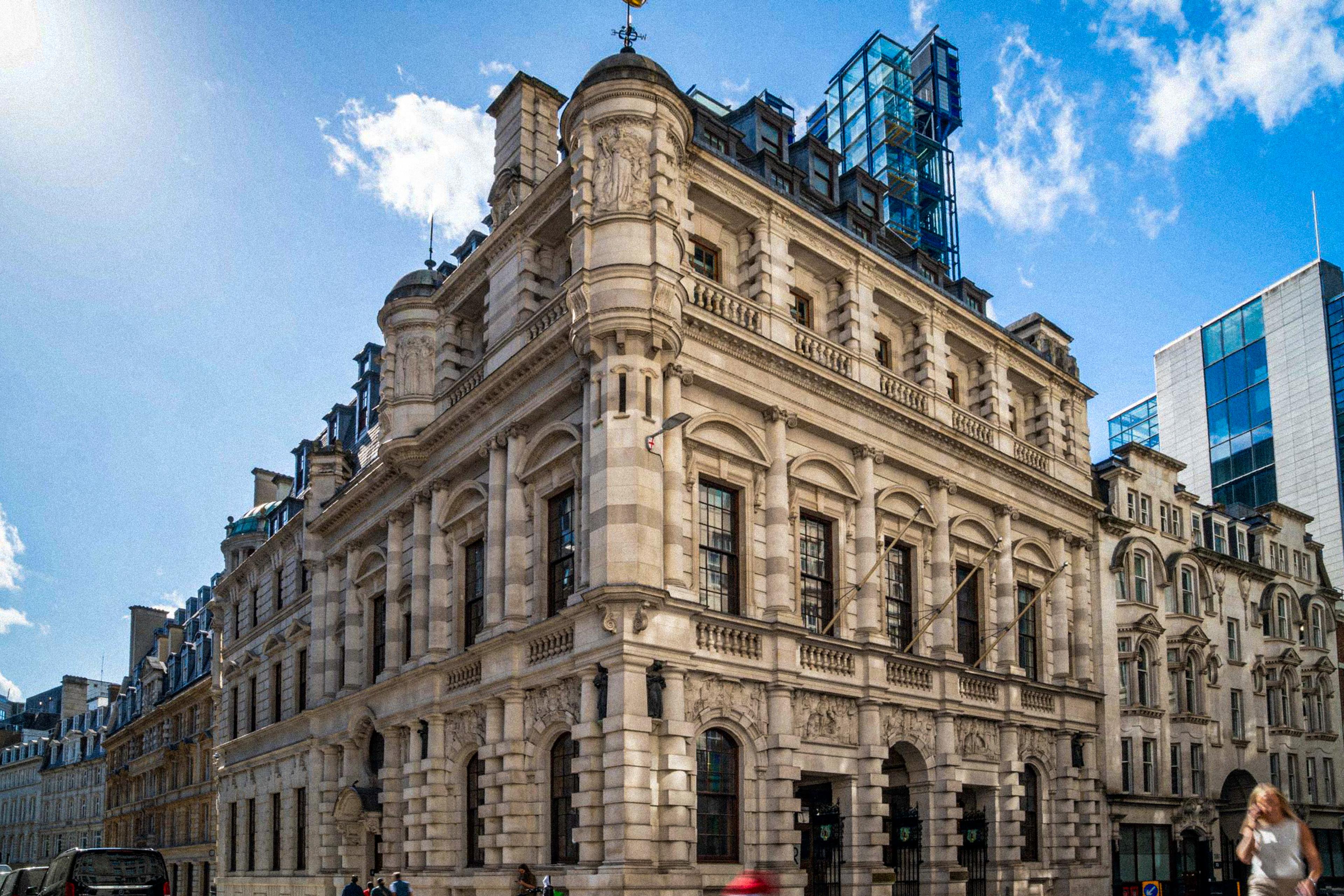
Challenges
Despite decades of refurbishments and modernisations to the building, there loomed a few significant challenges. How would they unite the extensive heritage materials of the ground and first floor with the ultra modern four floors above? How do you give employees a shared sense of purpose and impact? How do you delineate a building intended for three distinct brands within one family group?
Our task, and solution, was to create a branded environment and wayfinding system inside this profound building to solve these challenges, and more.
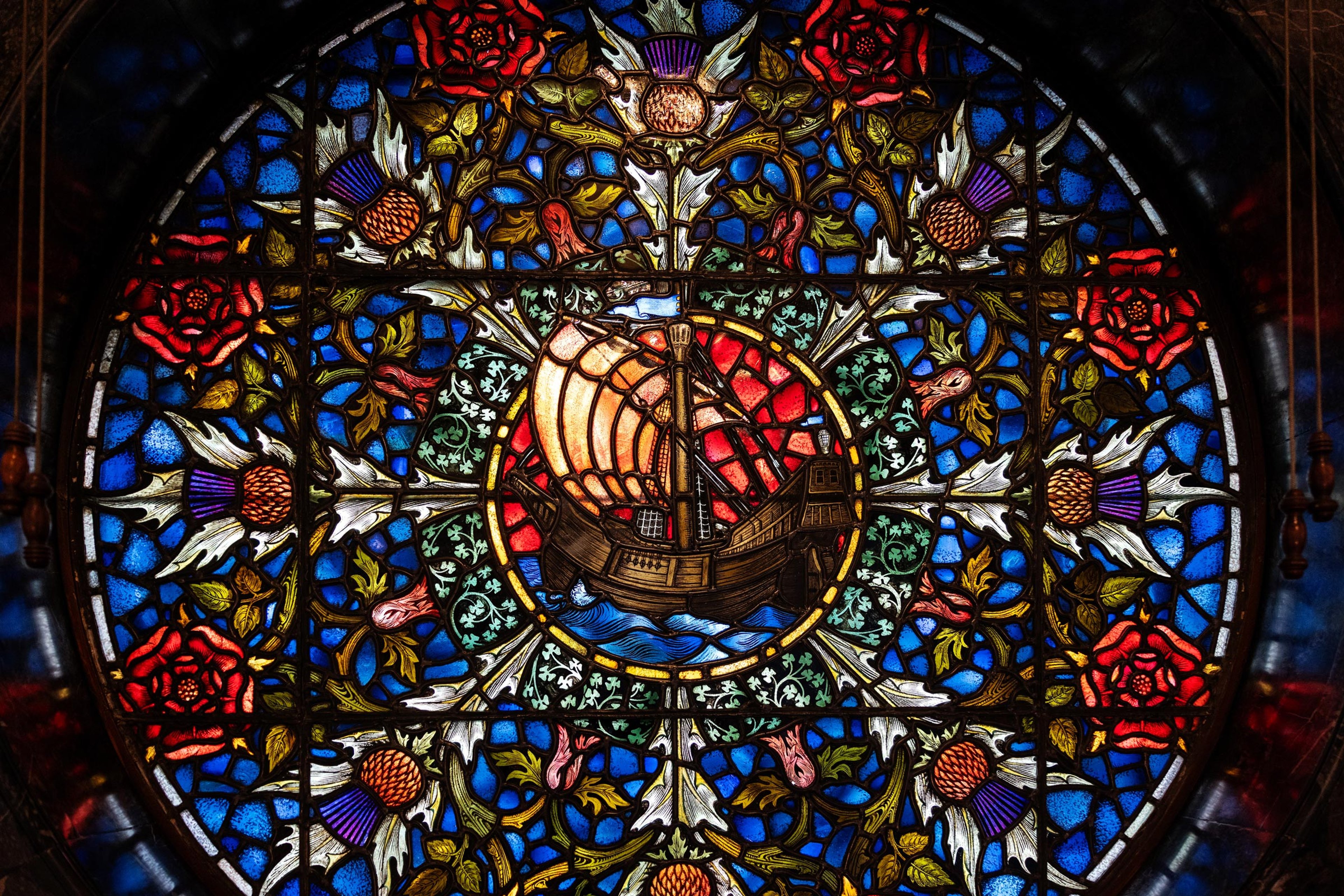

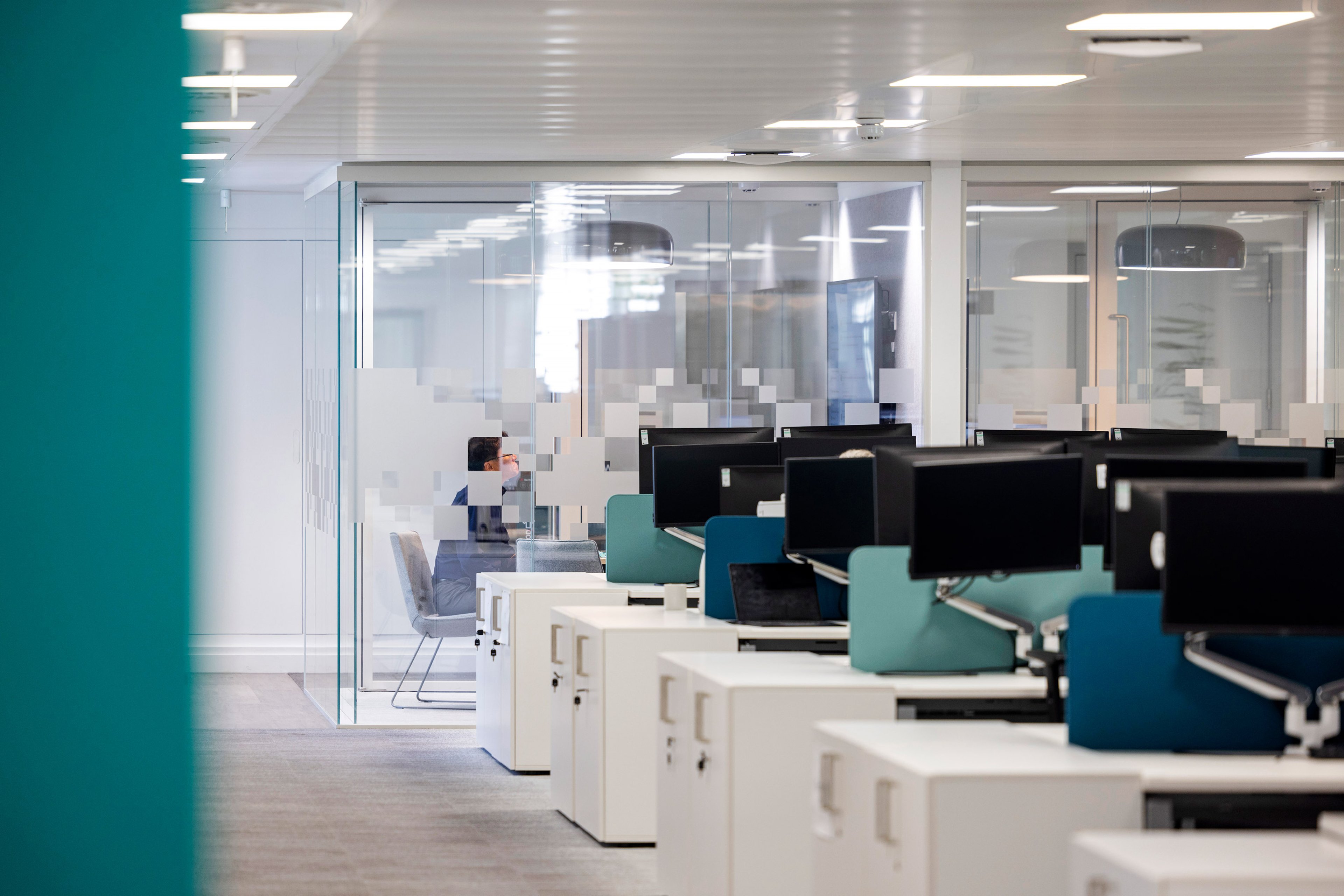
Challenges
Despite decades of refurbishments and modernisations to the building, there loomed a few significant challenges. How would they unite the extensive heritage materials of the ground and first floor with the ultra modern four floors above? How do you give employees a shared sense of purpose and impact? How do you delineate a building intended for three distinct brands within one family group?
Our task, and solution, was to create a branded environment and wayfinding system inside this profound building to solve these challenges, and more.

The big idea
A brand with 265 years of success and contribution has a lot to share. Our big idea stepped into this truth, and was constructed around sharing great stories of past, present and future. Each story, part of a network of moments distributed through the building; for employees and visitors to discover. Each story promotes either the heritage and historic impact of the business or future-focused work they carry out globally.

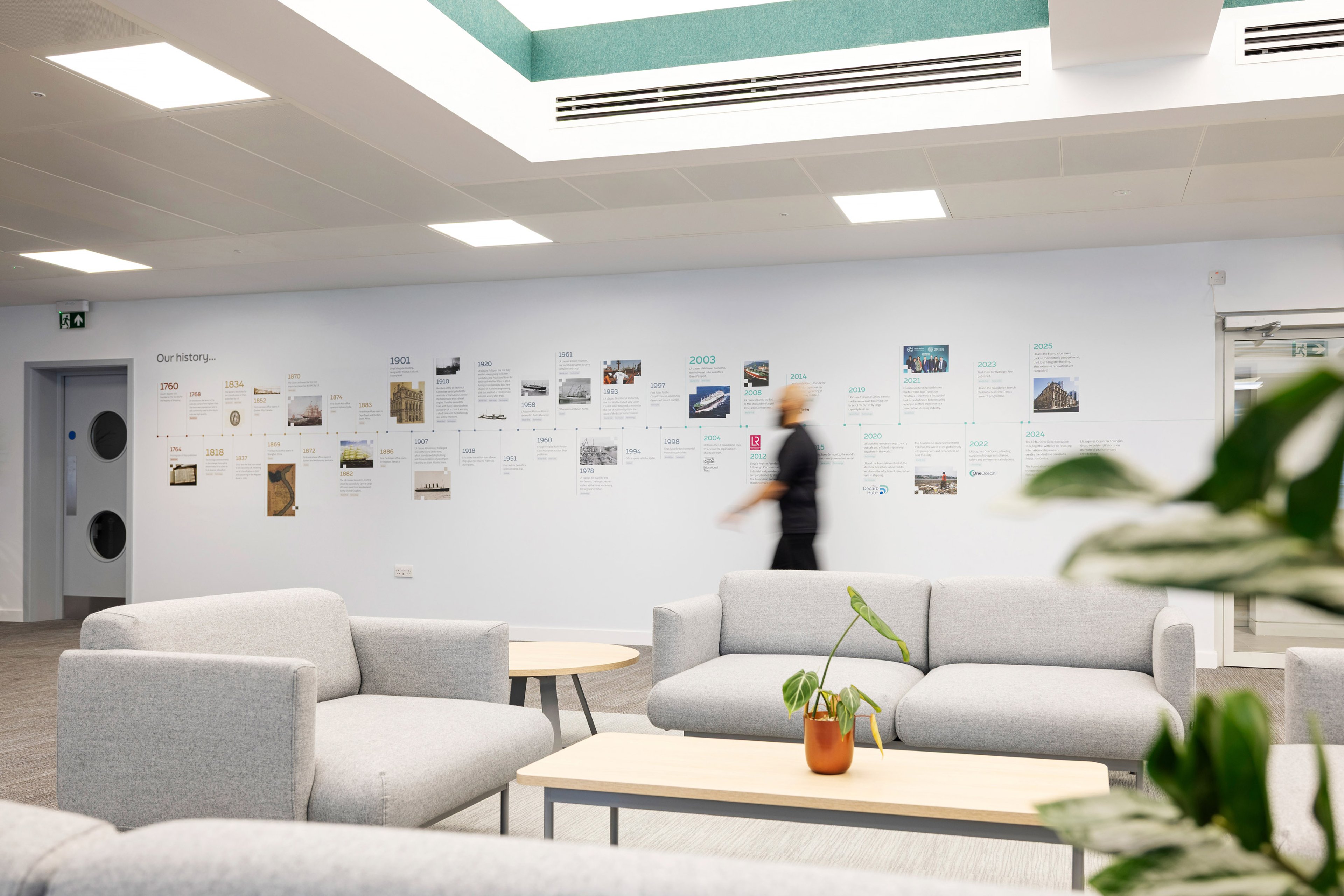
The big idea
A brand with 265 years of success and contribution has a lot to share. Our big idea stepped into this truth, and was constructed around sharing great stories of past, present and future. Each story, part of a network of moments distributed through the building; for employees and visitors to discover. Each story promotes either the heritage and historic impact of the business or future-focused work they carry out globally.
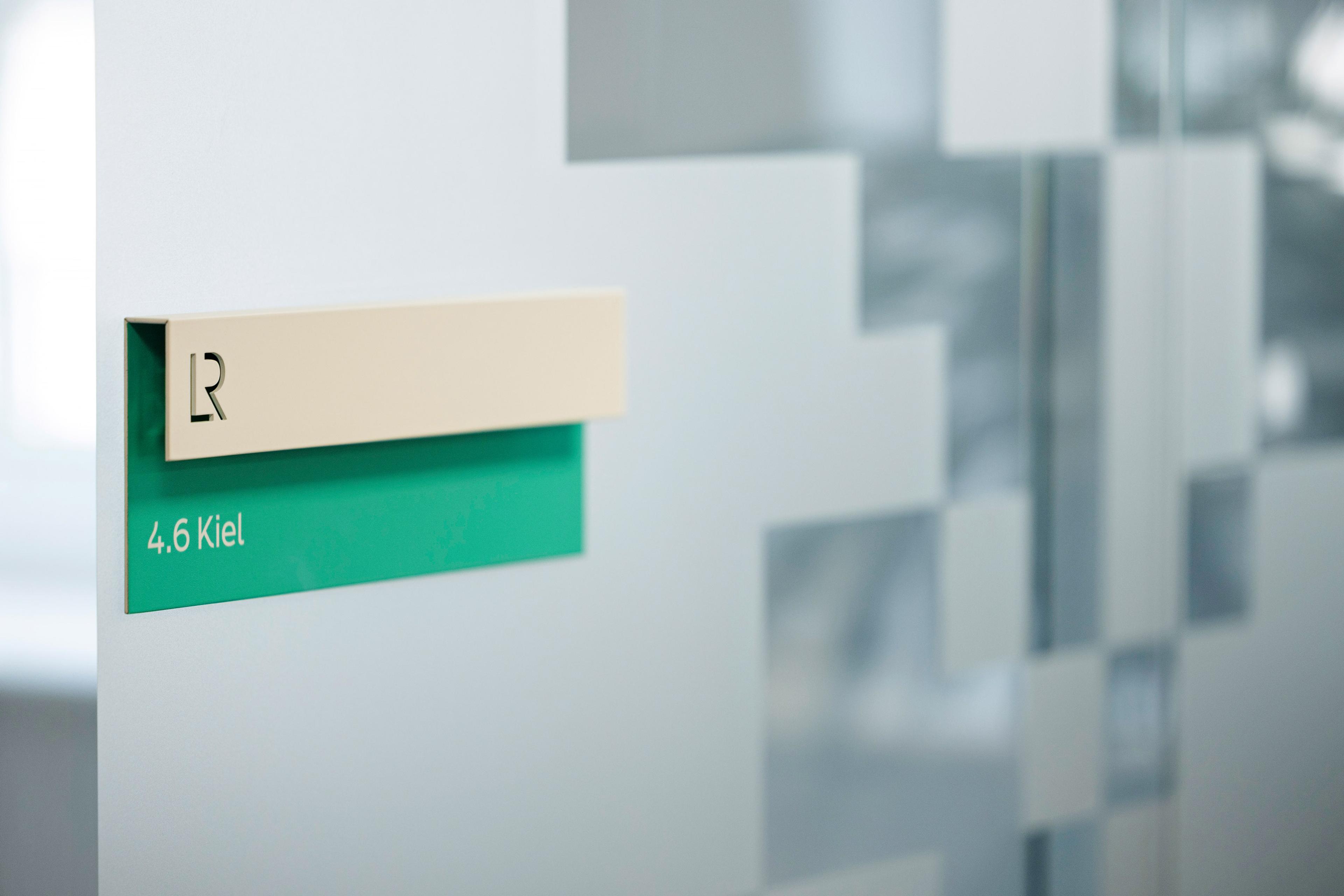
What we did
Content gathering
Sourcing key stories demanded deep discovery sessions; interviews, workshops and visits into a rich heritage archive. Selections were made across a carefully balanced matrix of topics, sectors, ideas and chronology before being allocated out in the building.
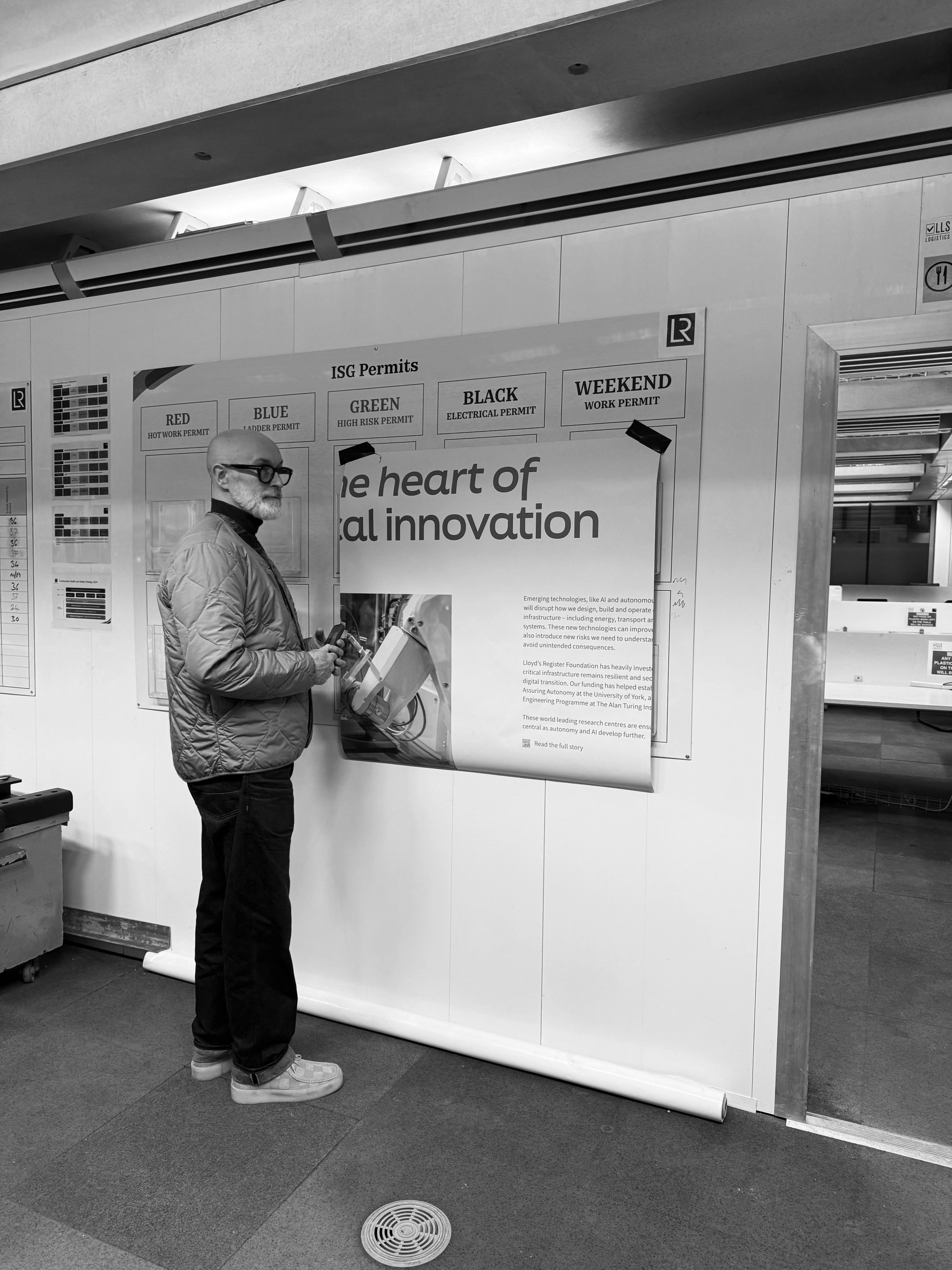
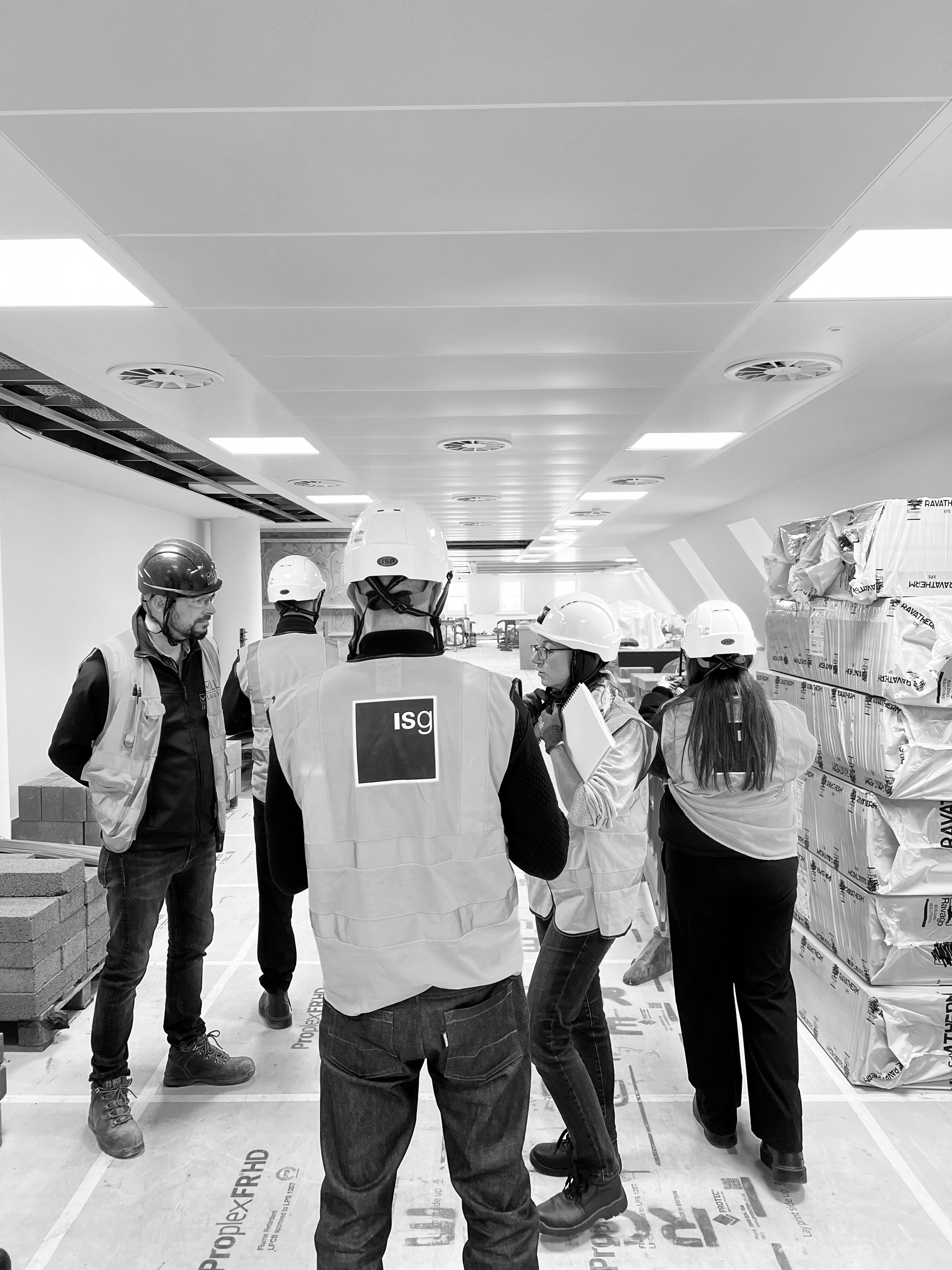
What we did
Content gathering
Sourcing key stories demanded deep discovery sessions; interviews, workshops and visits into a rich heritage archive. Selections were made across a carefully balanced matrix of topics, sectors, ideas and chronology before being allocated out in the building.
Design system
Our design system reflected and pushed the current brand identity, uniting the three entities in the building—Lloyd’s Register, Lloyd’s Register Foundation and the Heritage Centre.

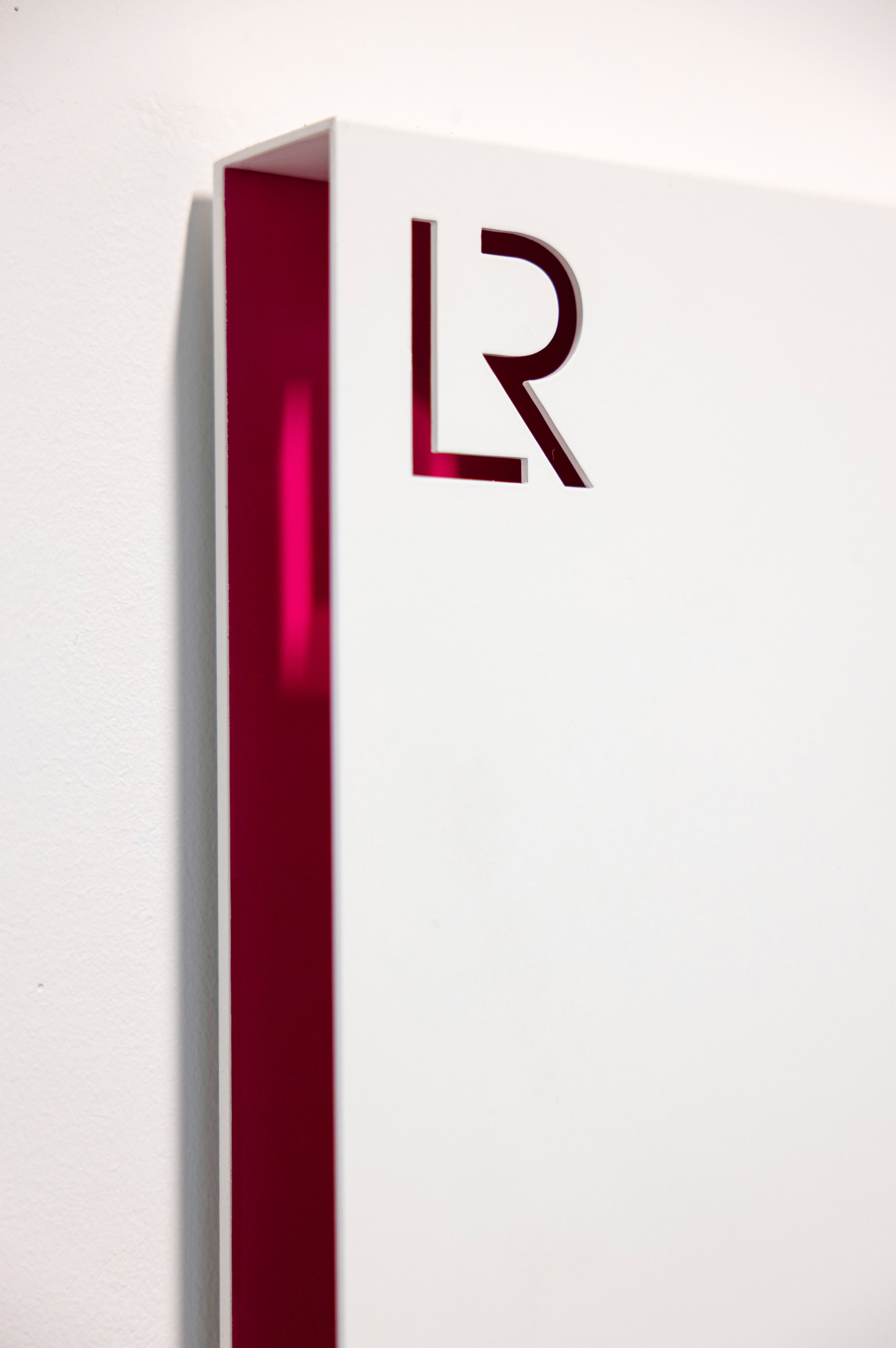
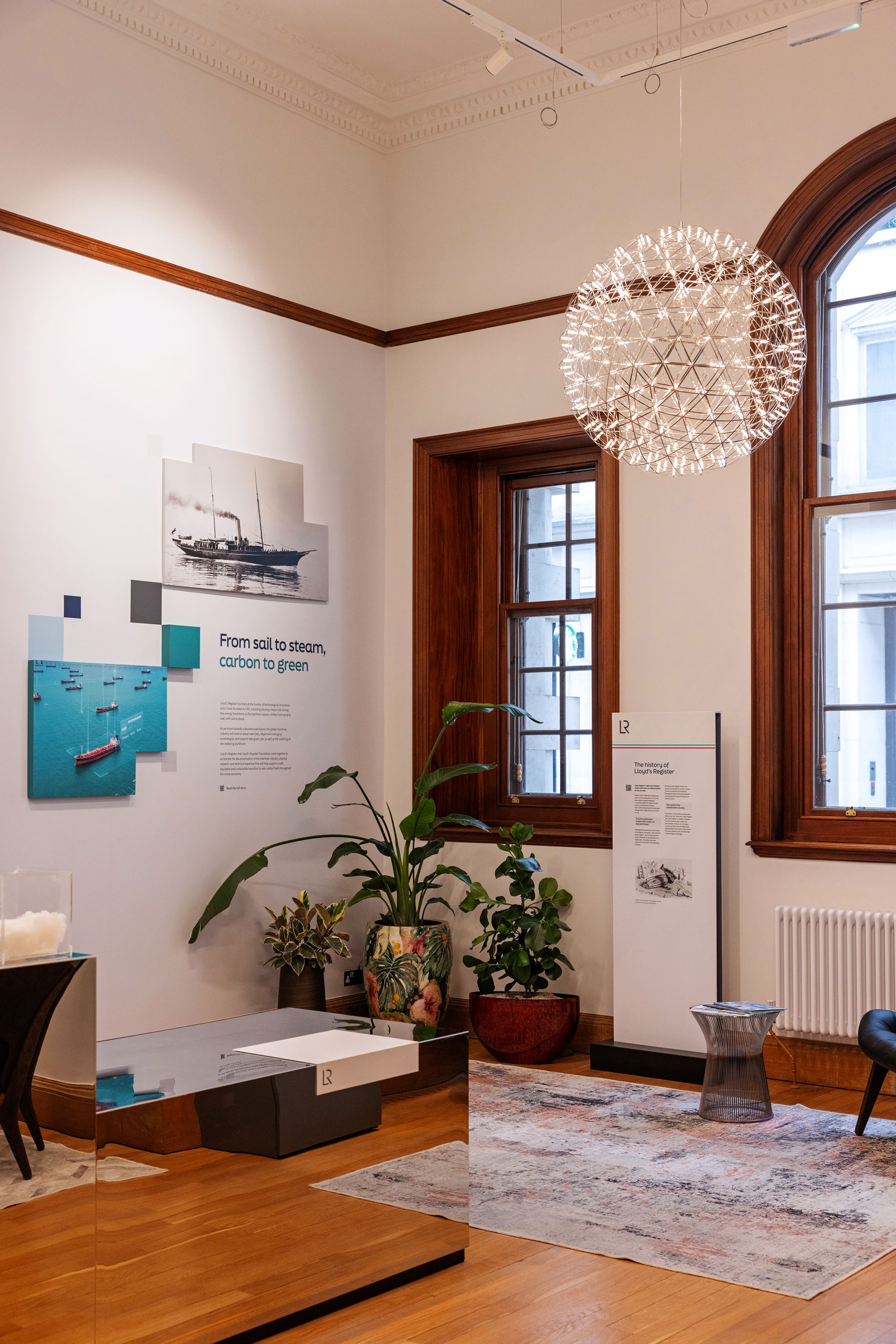
Design system
Our design system reflected and pushed the current brand identity, uniting the three entities in the building—Lloyd’s Register, Lloyd’s Register Foundation and the Heritage Centre.
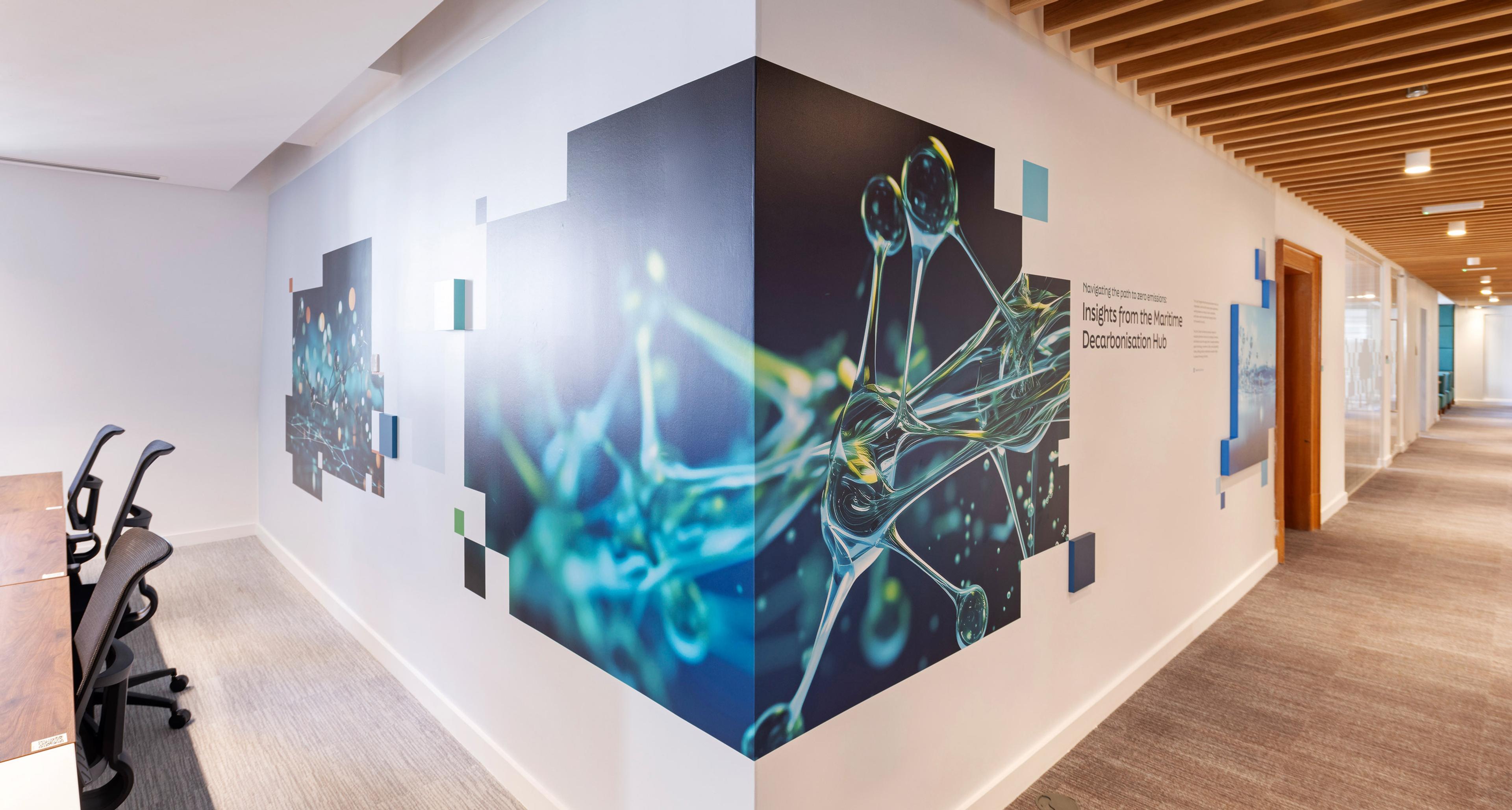
Storytelling moments
Of the forty stories created, many were deployed through freestanding metal totems (which navigated the listed building restrictions), but most were delivered through large-scale signature wall graphics. Some of these wall ‘moments’ also included 3D relief graphics to add depth and texture, and all stories host a QR code to a fuller version to read on a dedicated web page.

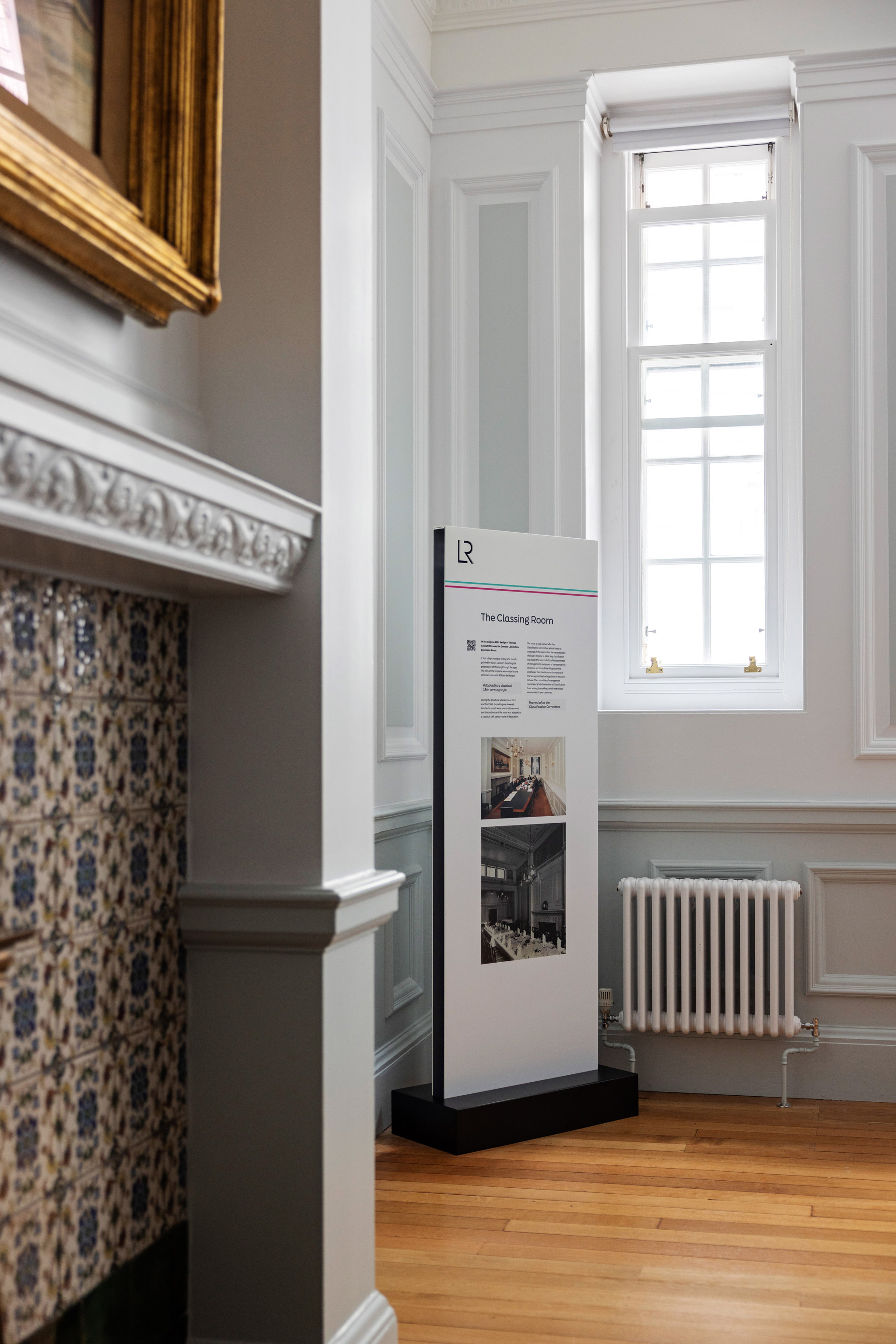
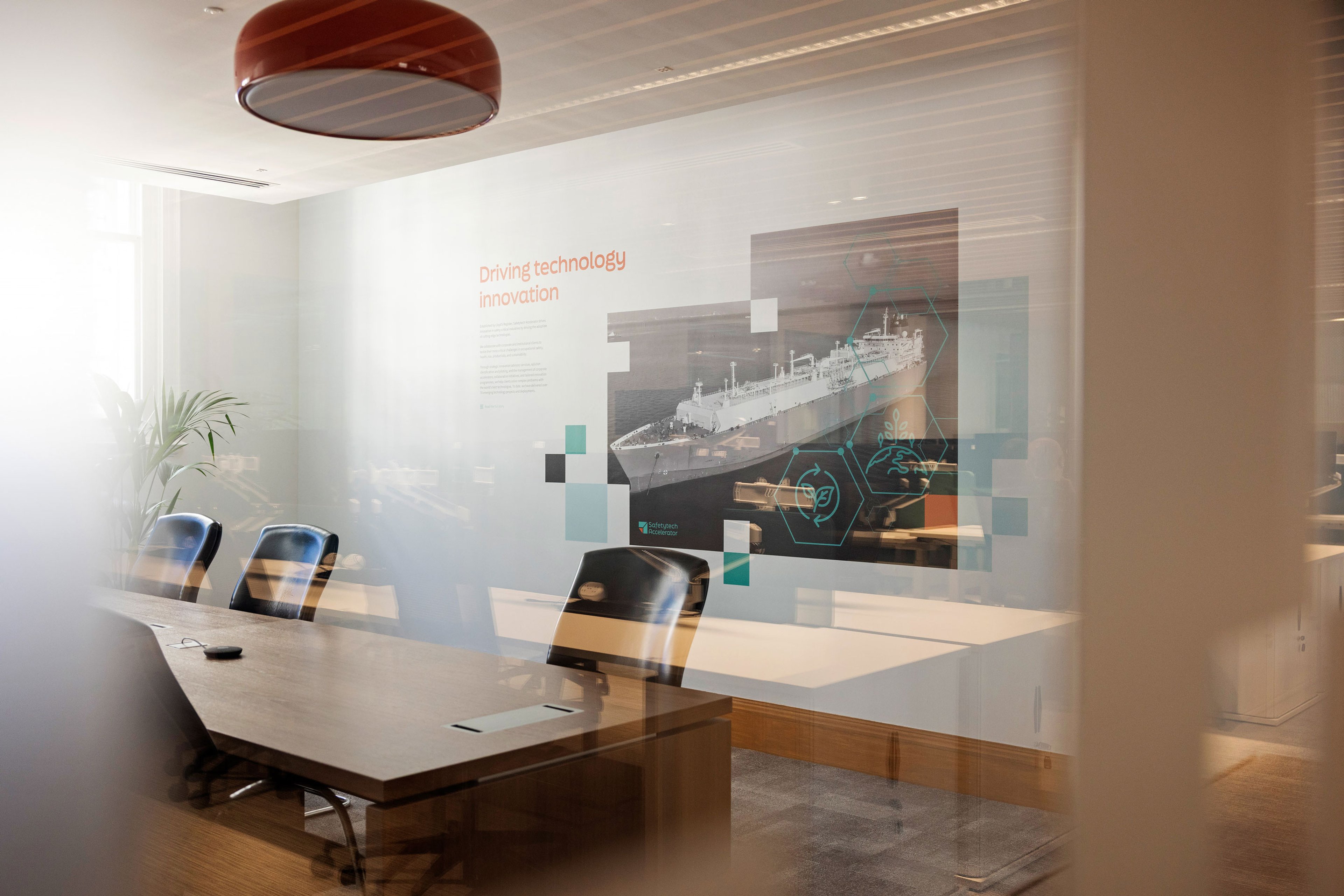
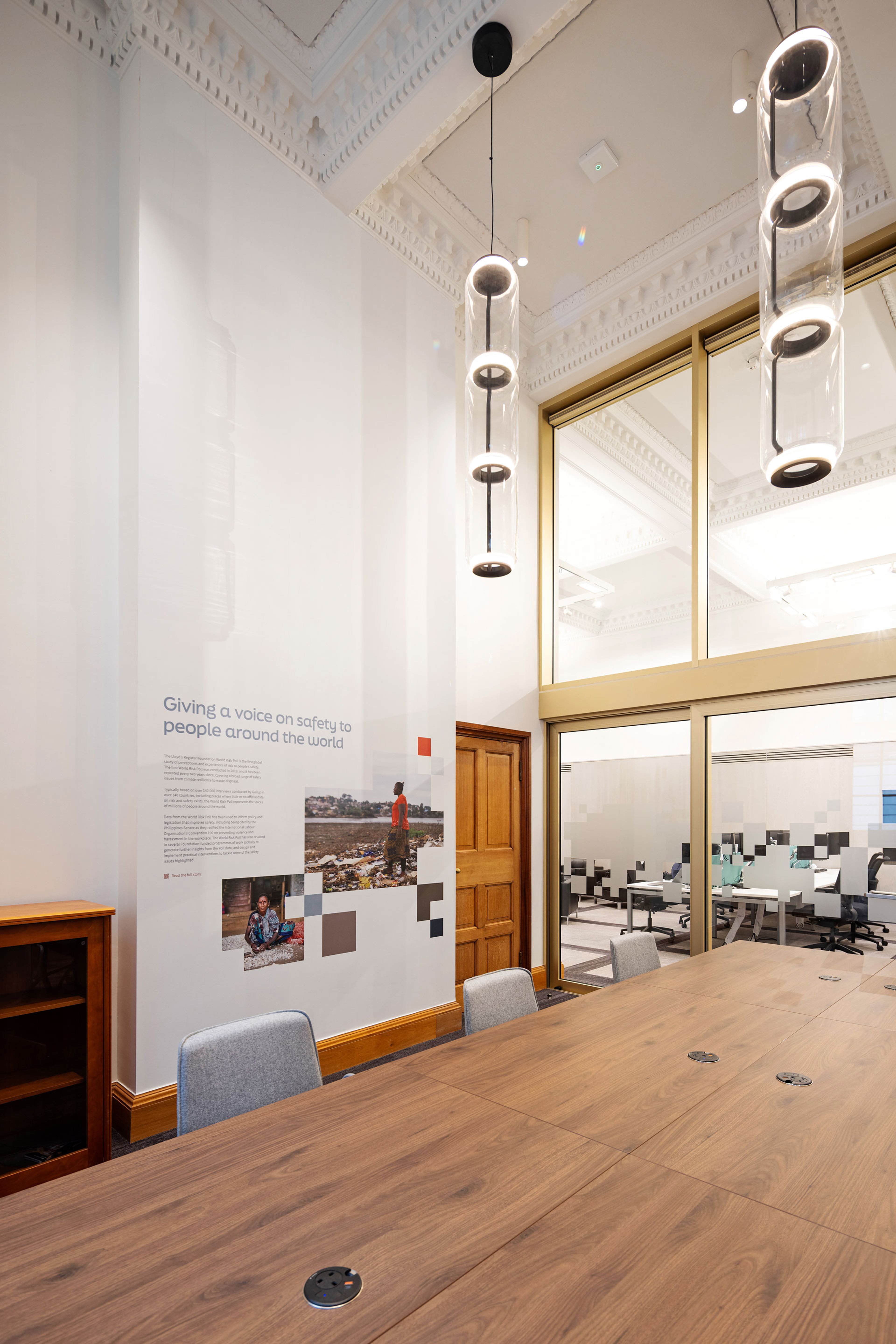


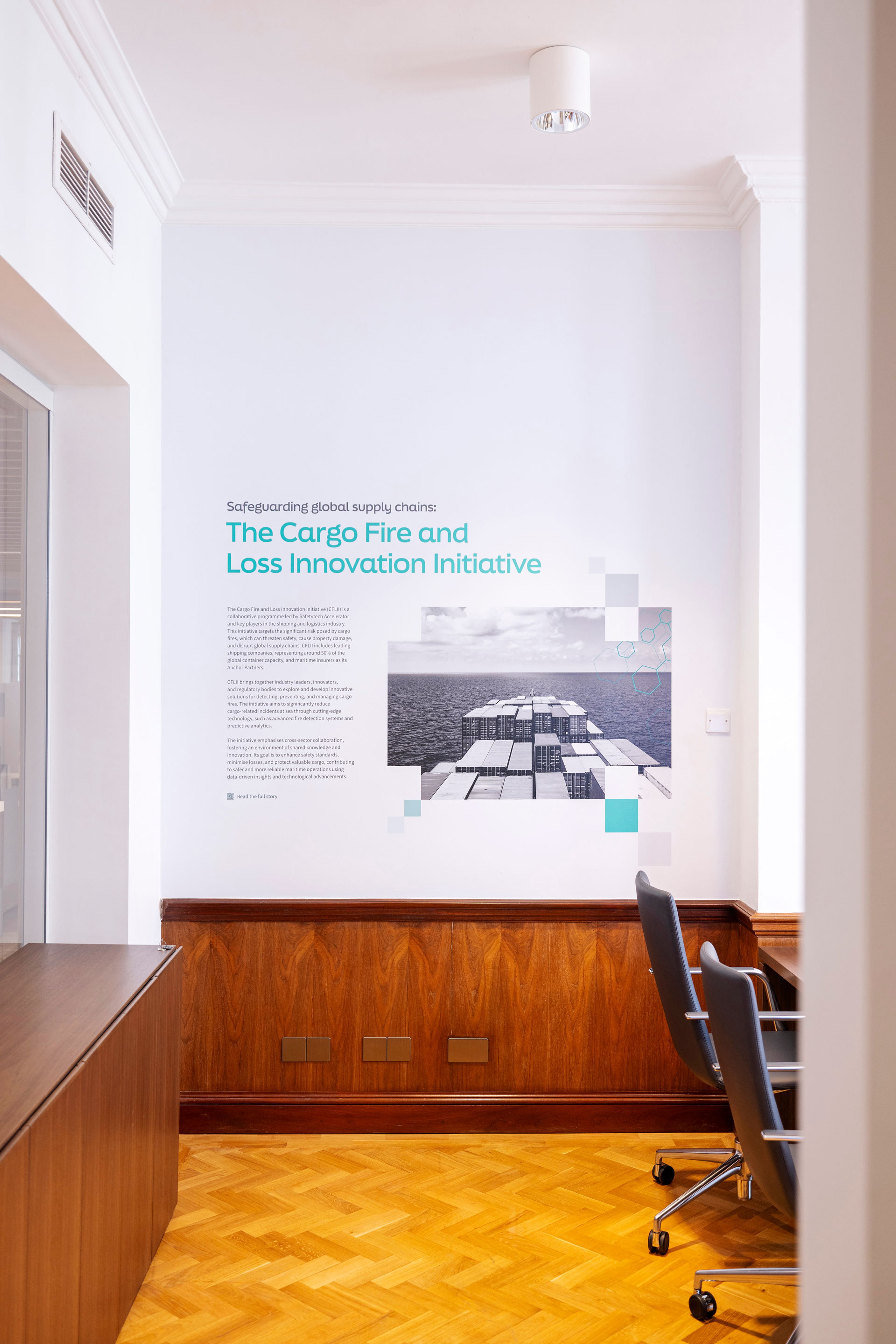
Storytelling moments
Of the forty stories created, many were deployed through freestanding metal totems (which navigated the listed building restrictions), but most were delivered through large-scale signature wall graphics. Some of these wall ‘moments’ also included 3D relief graphics to add depth and texture, and all stories host a QR code to a fuller version to read on a dedicated web page.
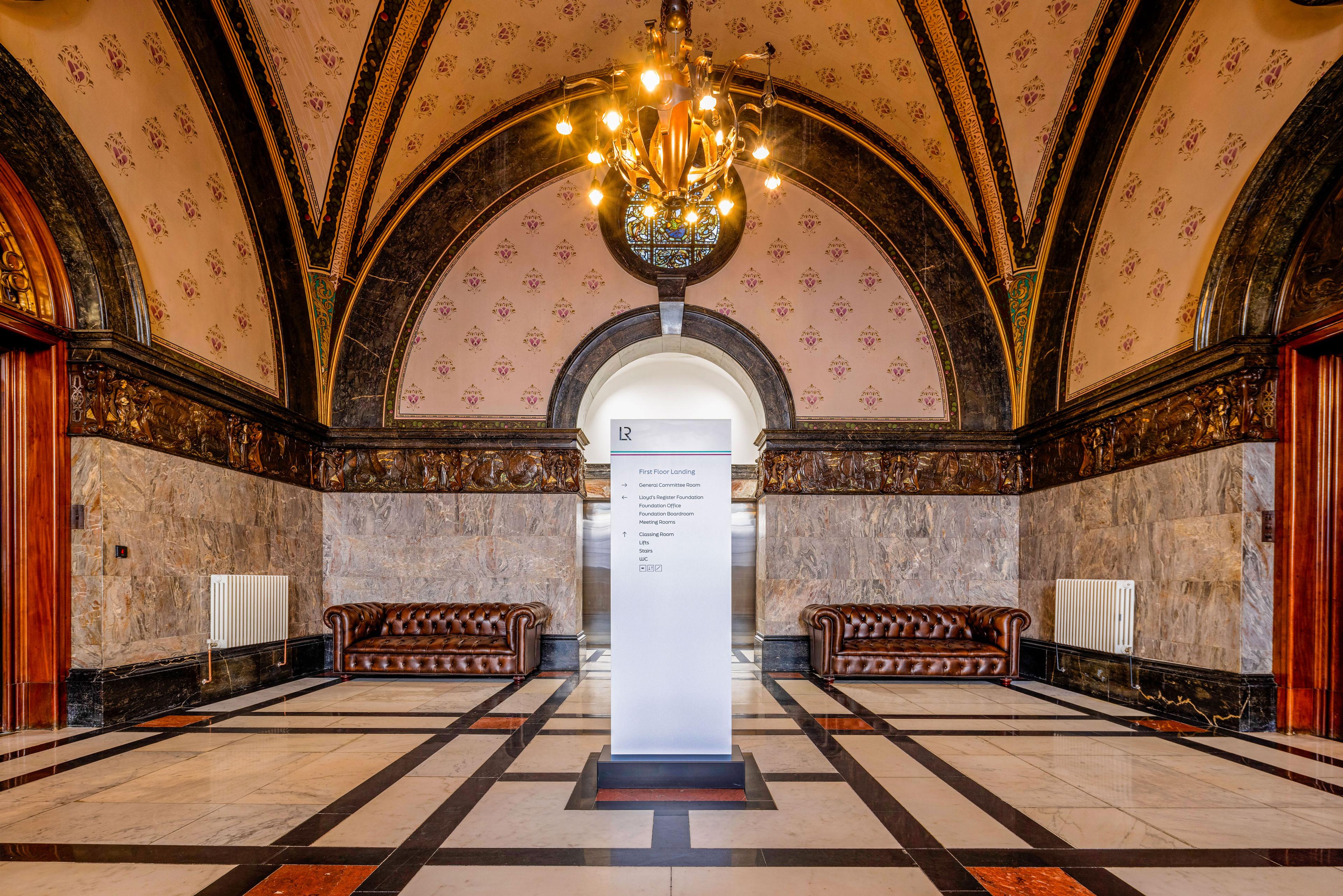
Wayfinding
Together with the architect and project teams, we developed a wayfinding and signage masterplan that worked in areas of both extreme heritage sensitivity and modern refurbishment. Visitor routes, key areas of interest and priority informed this process.
When it came to materiality, specialist fabrication and installation teams fed into our bespoke solution, which felt at home wherever it was installed across the building. One uniting factor was the ability to ‘see through’ signage, inspired by the current Lloyd’s Register logo, which works as a ‘window to the world’.


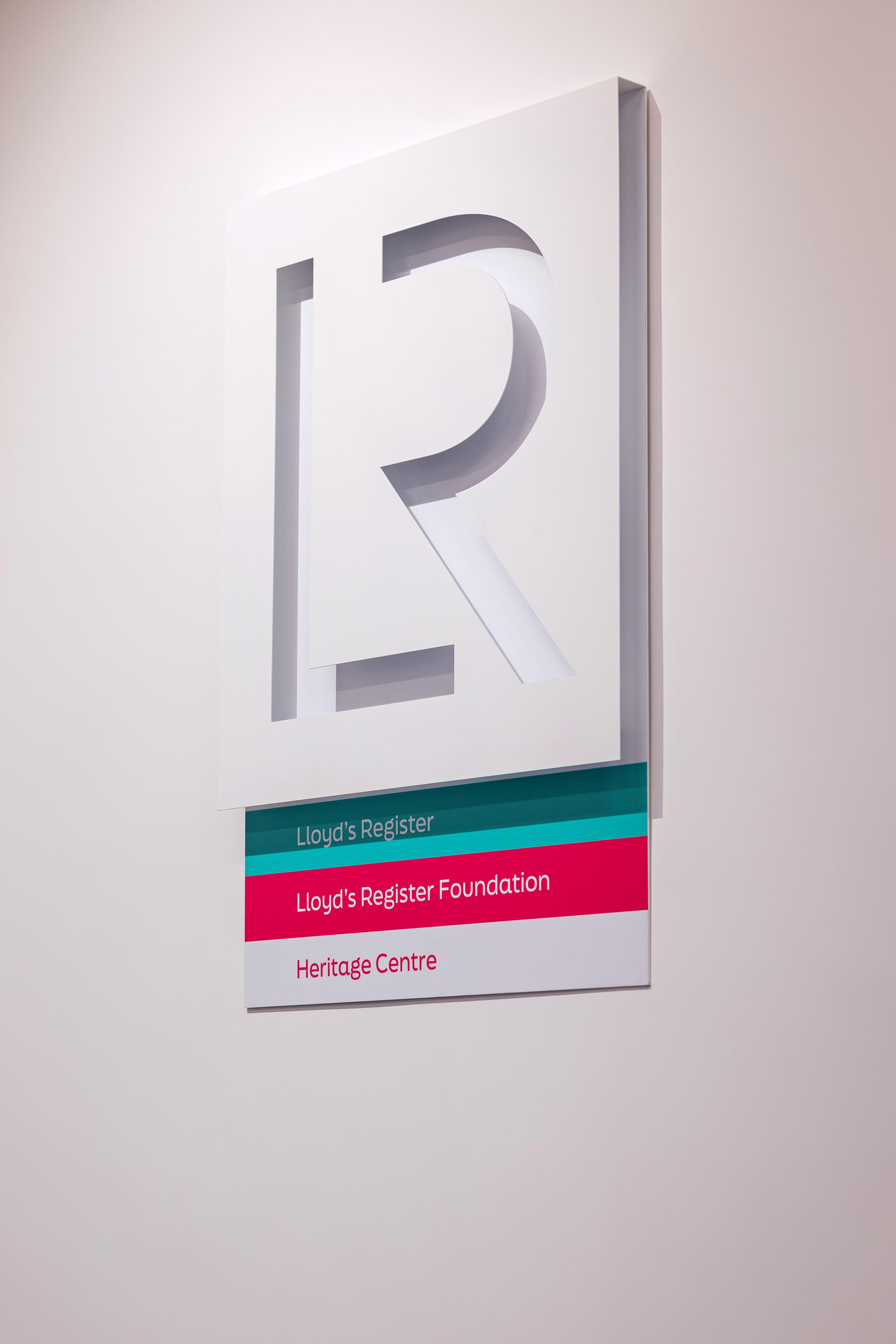


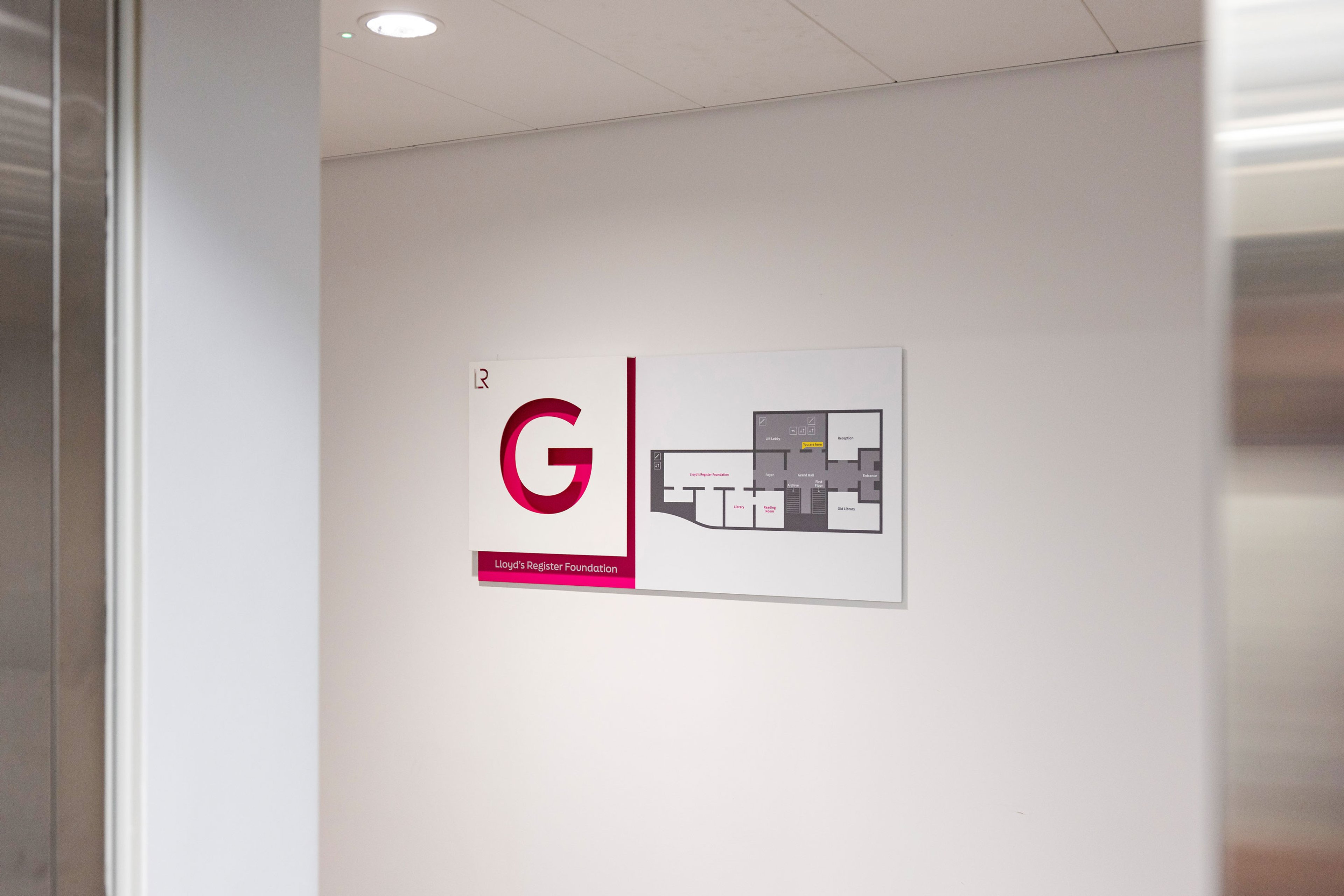
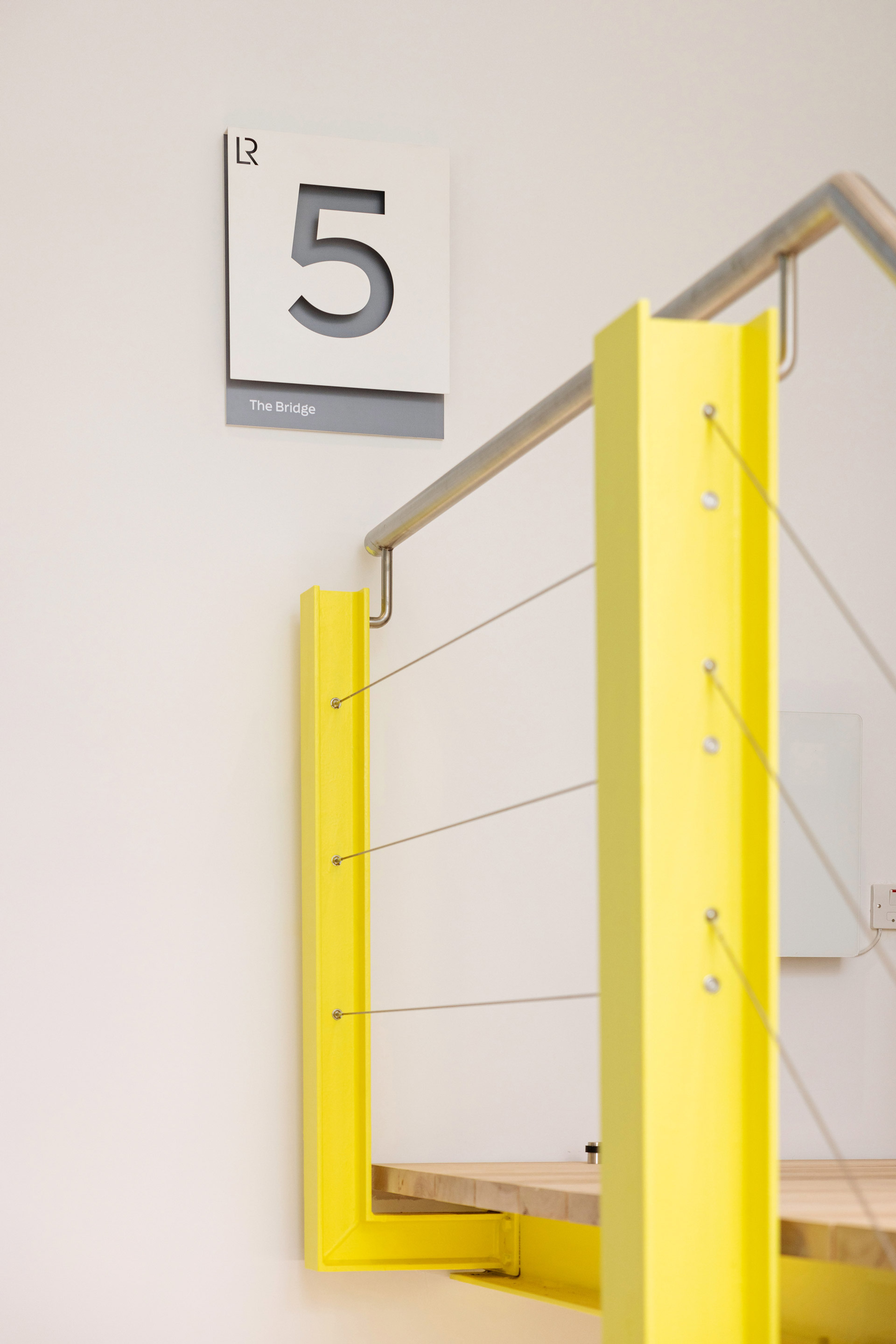
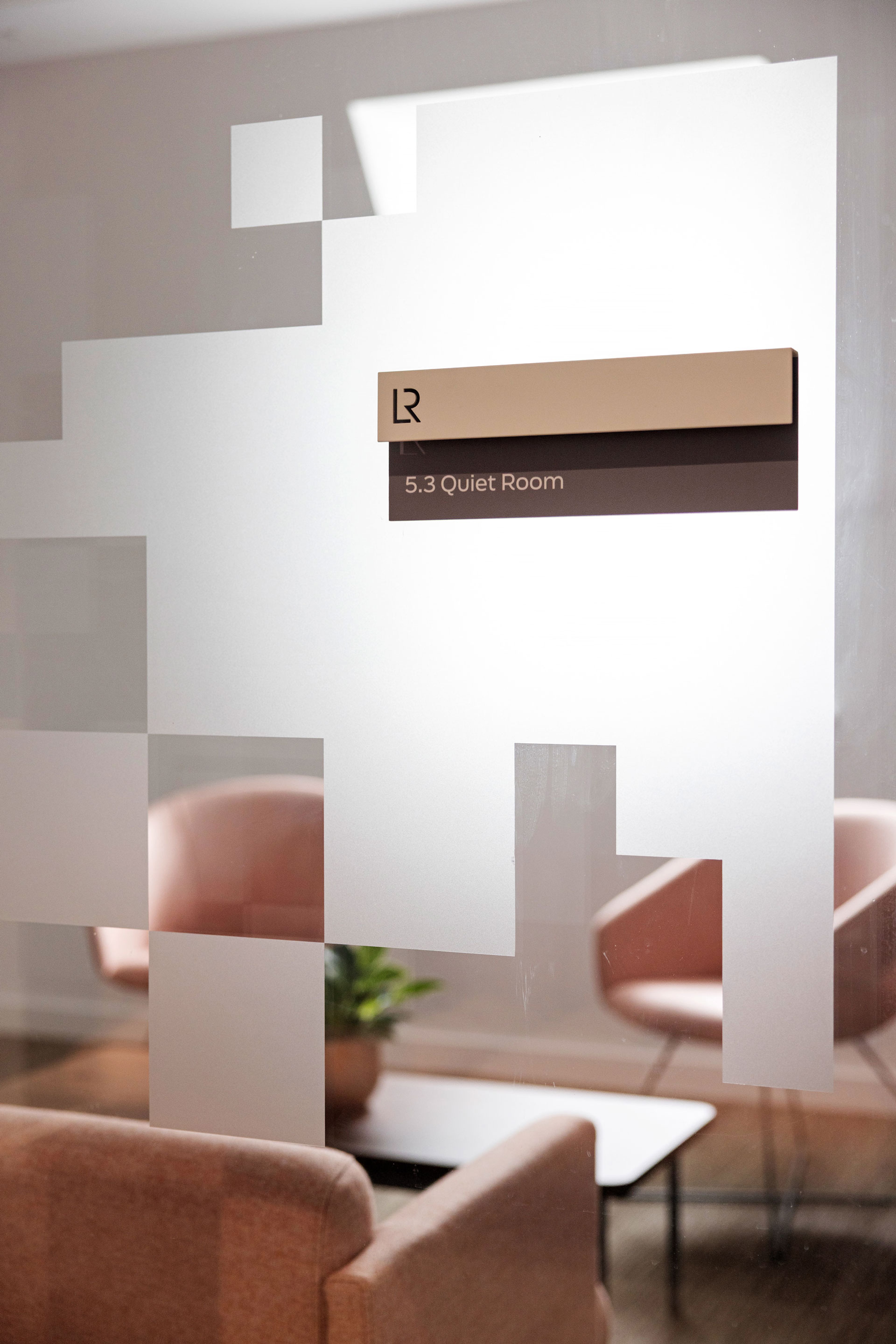
Wayfinding
Together with the architect and project teams, we developed a wayfinding and signage masterplan that worked in areas of both extreme heritage sensitivity and modern refurbishment. Visitor routes, key areas of interest and priority informed this process.
When it came to materiality, specialist fabrication and installation teams fed into our bespoke solution, which felt at home wherever it was installed across the building. One uniting factor was the ability to ‘see through’ signage, inspired by the current Lloyd’s Register logo, which works as a ‘window to the world’.
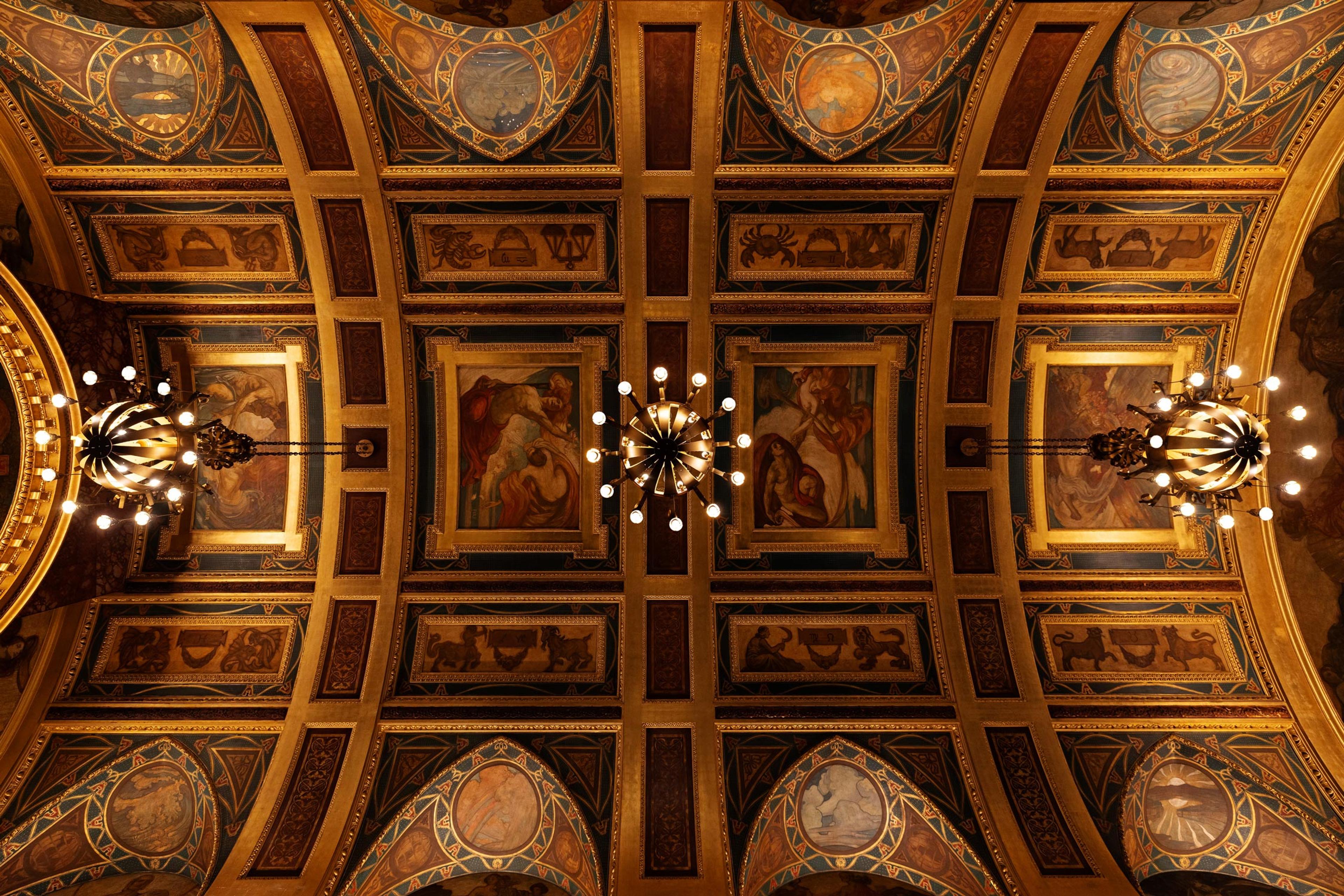
Listed building consent
As part of a multi-team listed building consent application, we liaised with heritage officers, planning consultants, architects, historians and the incumbent heritage team to ensure our solution could effectively be implemented and would be approved by the City of London.

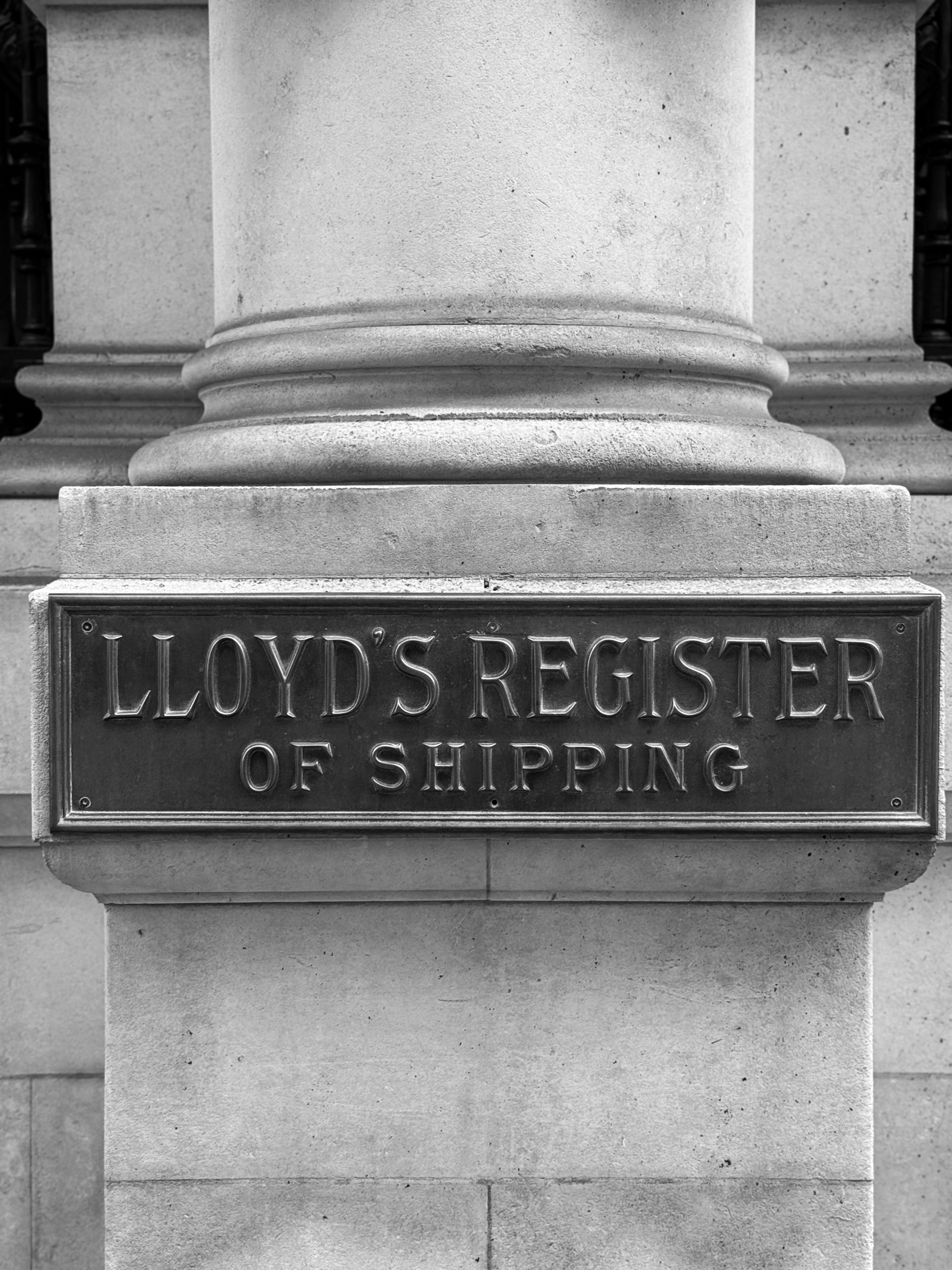
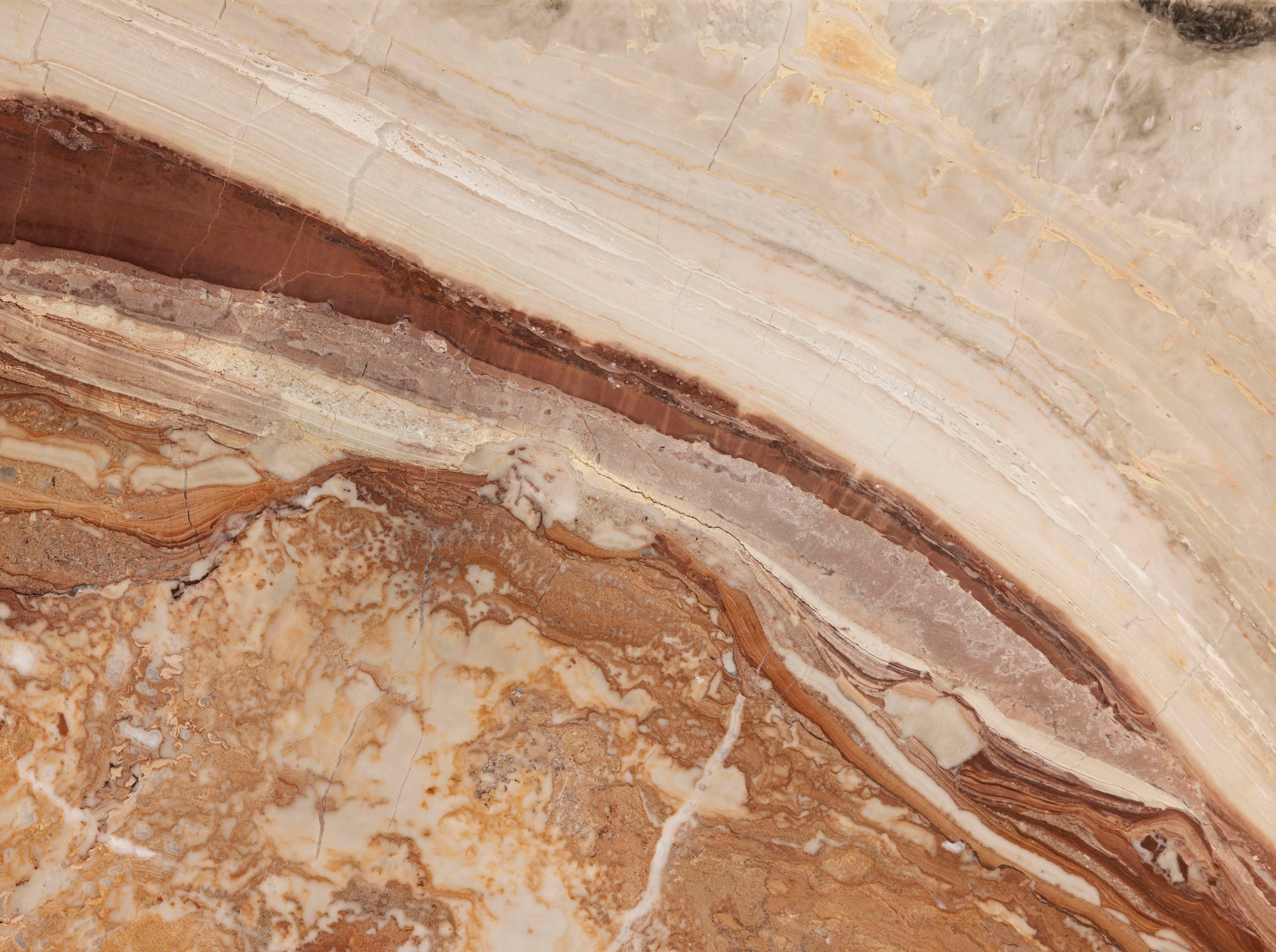
Listed building consent
As part of a multi-team listed building consent application, we liaised with heritage officers, planning consultants, architects, historians and the incumbent heritage team to ensure our solution could effectively be implemented and would be approved by the City of London.

Impact
In the Summer of 2025, the Lloyd’s Register building successfully opened. For employees, the building serves as a daily reminder of the impact of their efforts. For Lloyd’s Register, the office becomes a cultural anchor that makes a compelling case for coming together in a post-COVID, hybrid world. It gives the kind of meaning and purpose that a home office could not.

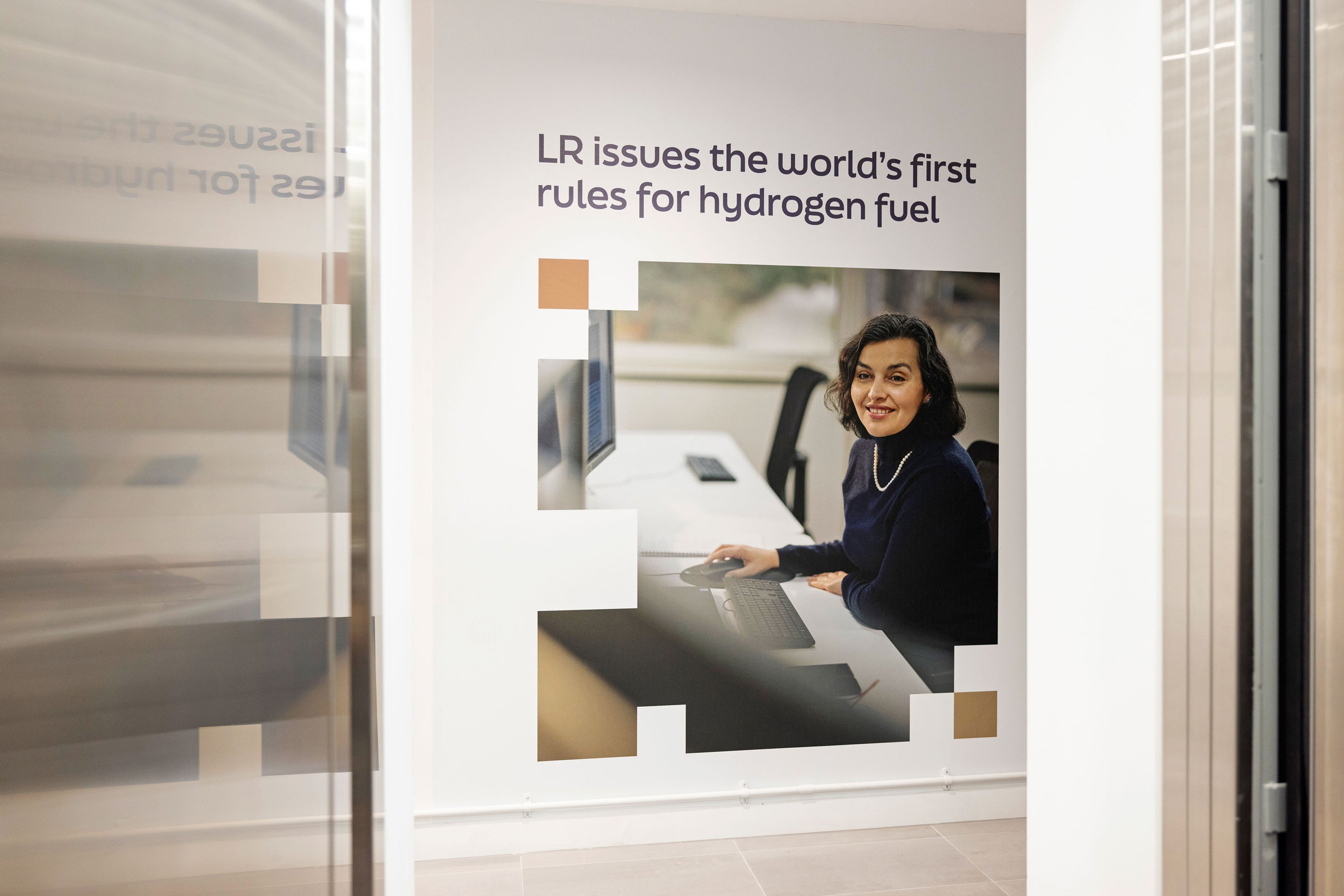
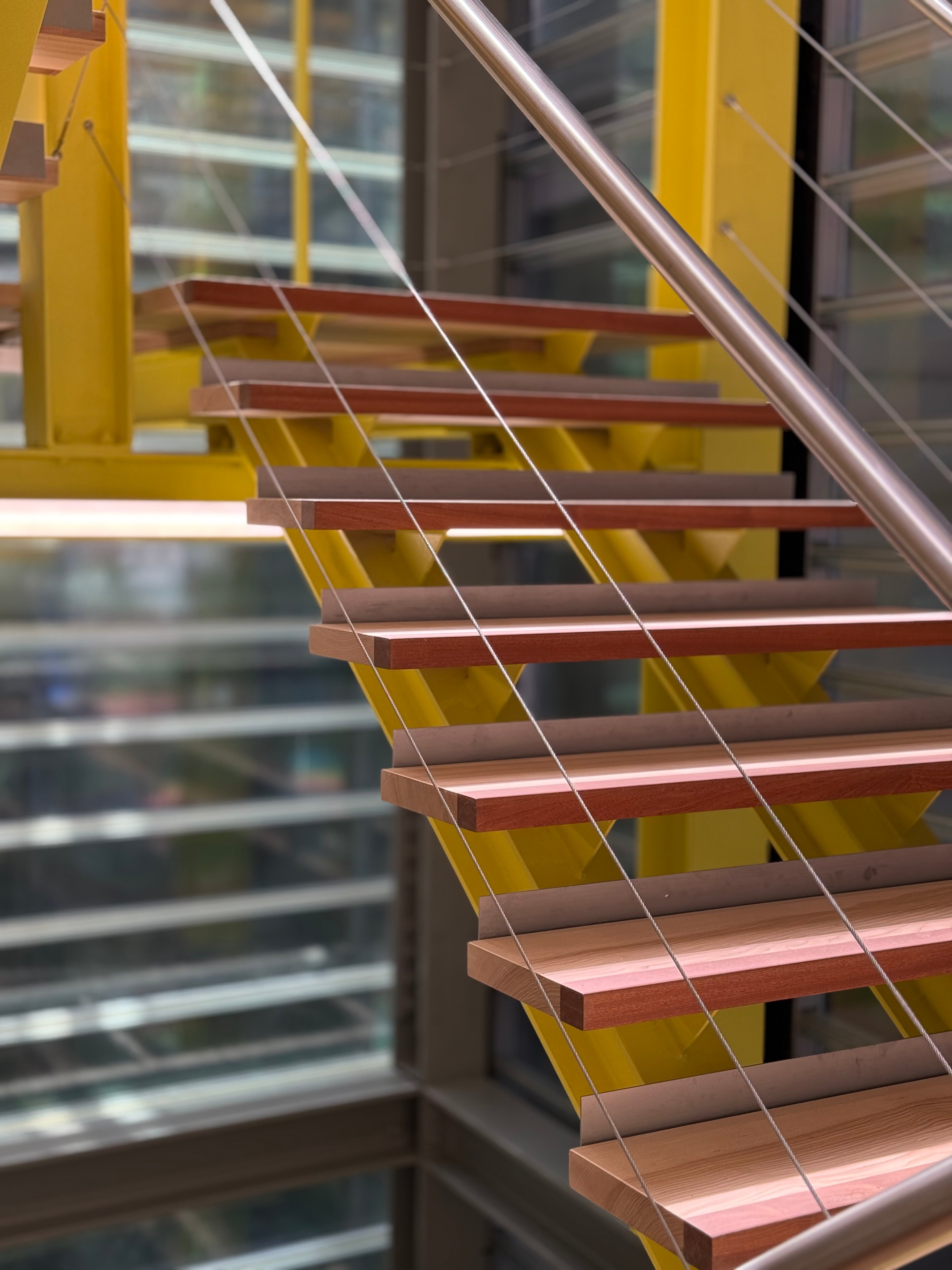
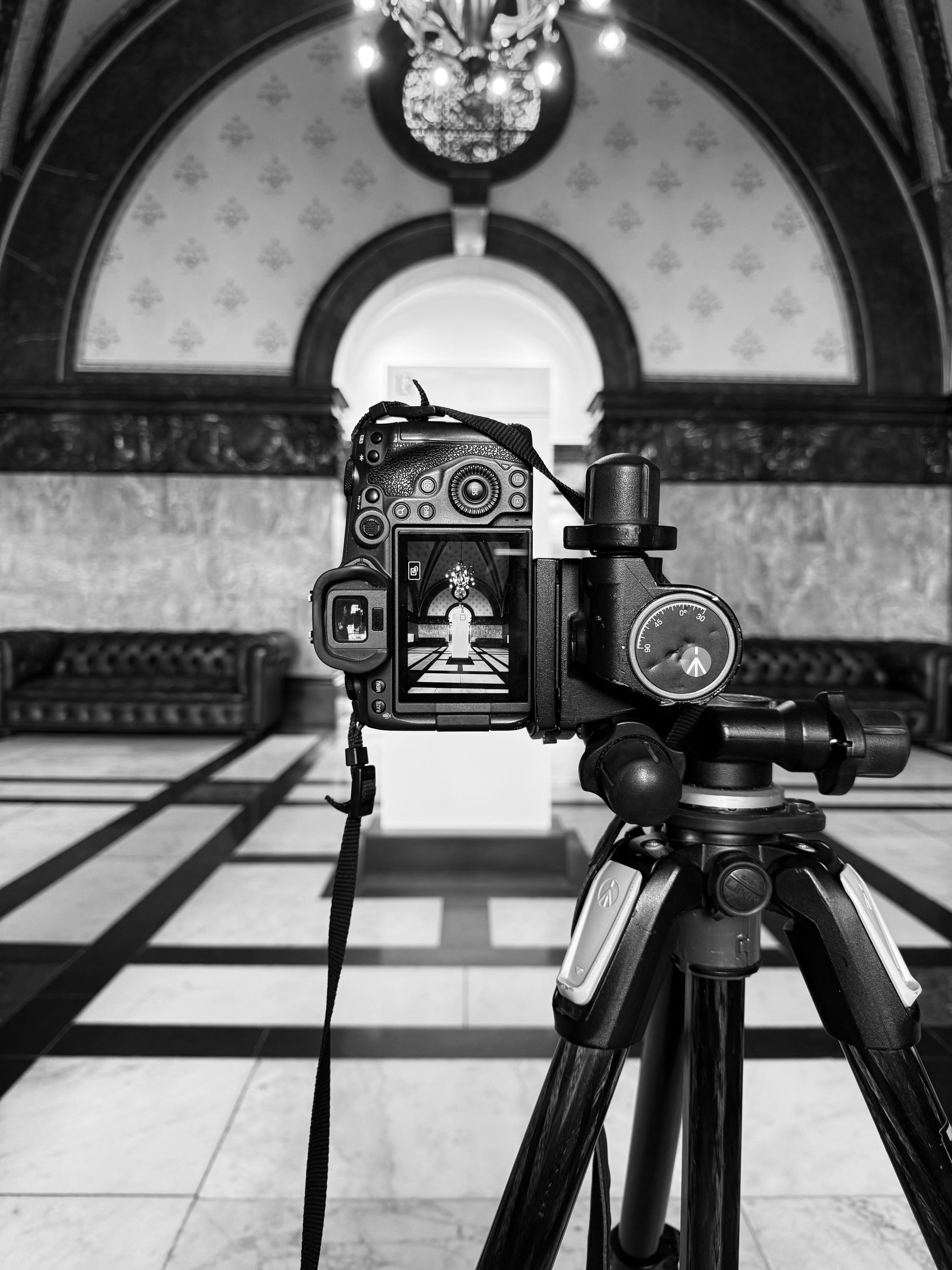
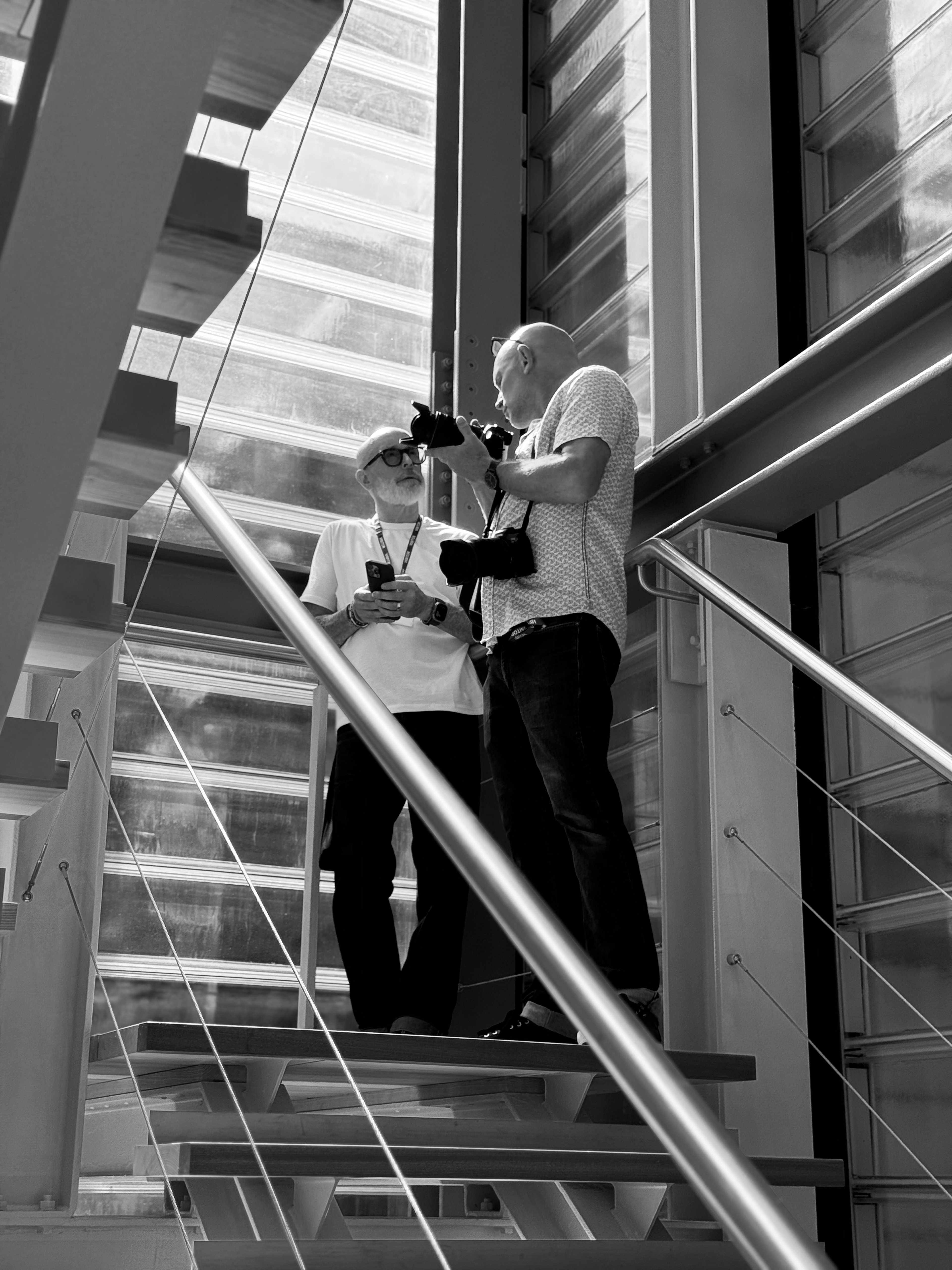
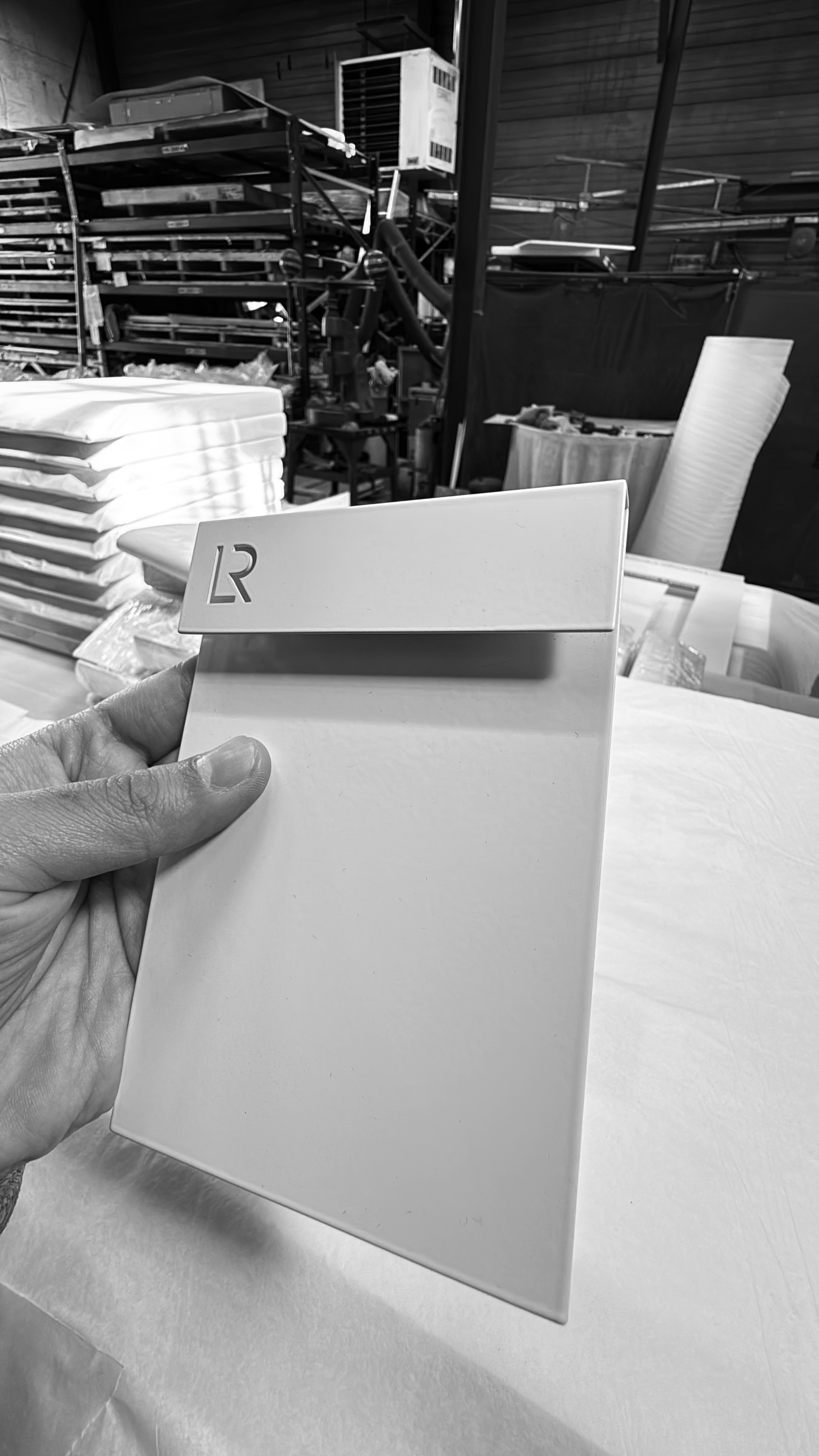
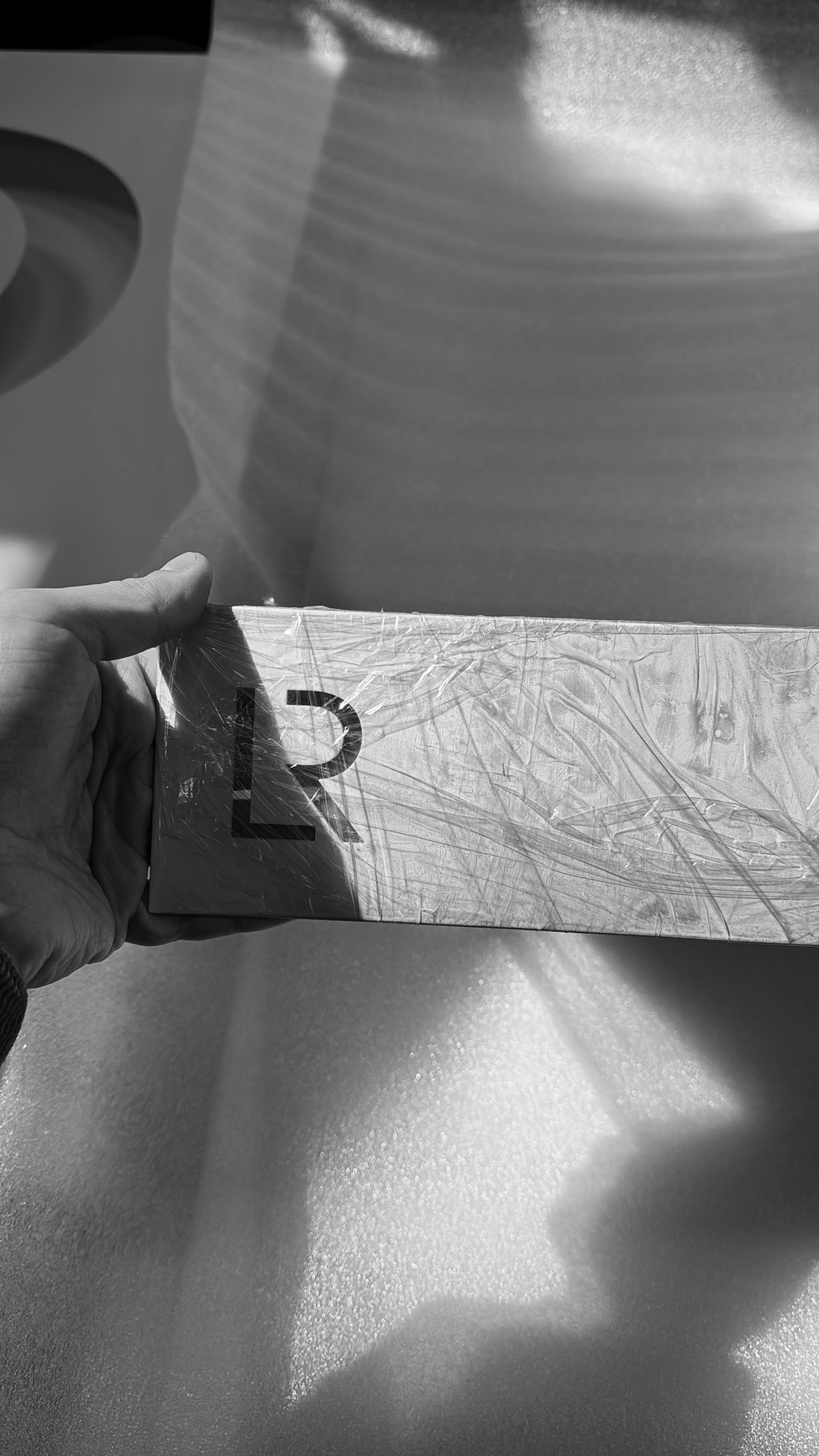
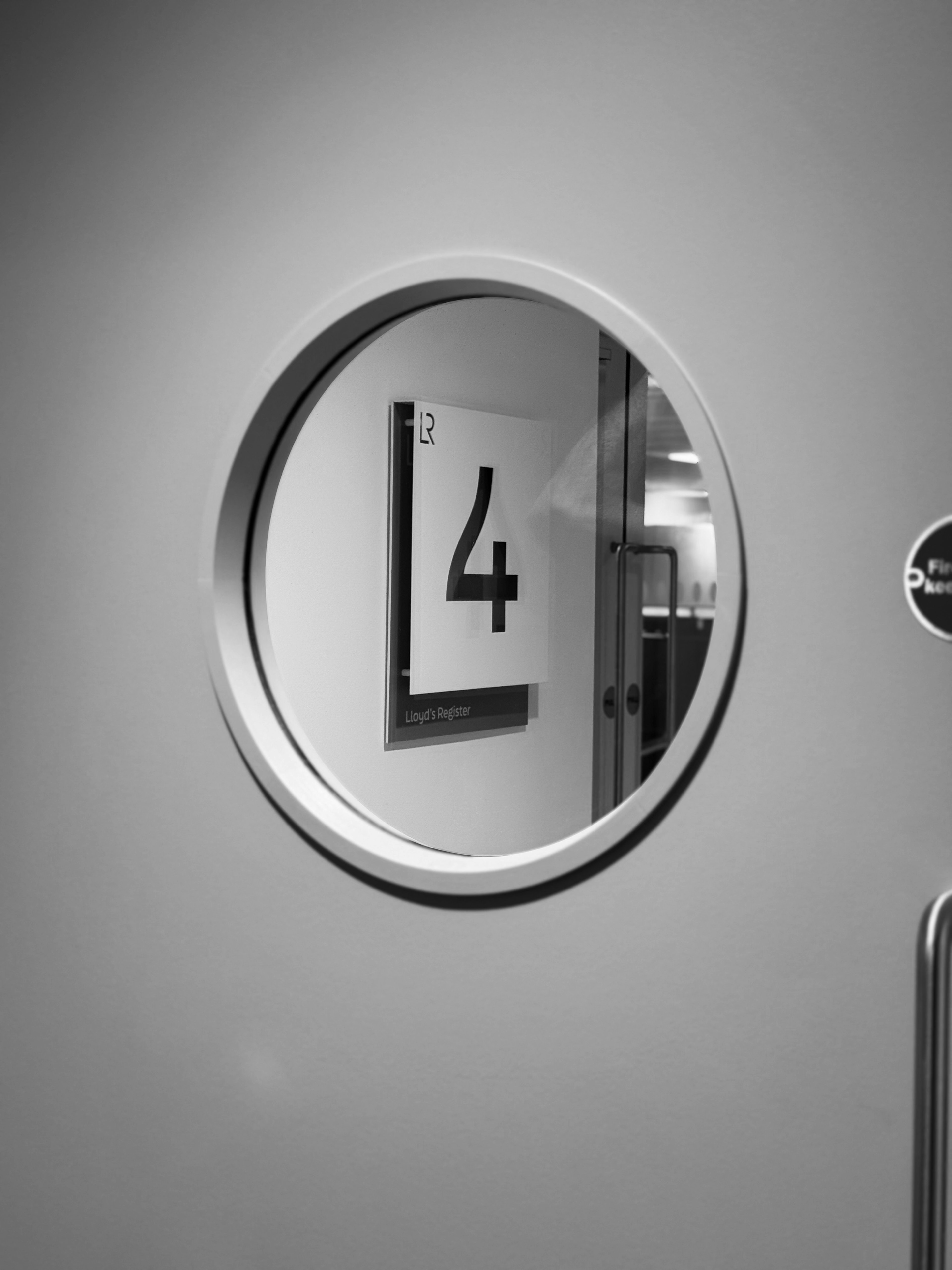
Impact
In the Summer of 2025, the Lloyd’s Register building successfully opened. For employees, the building serves as a daily reminder of the impact of their efforts. For Lloyd’s Register, the office becomes a cultural anchor that makes a compelling case for coming together in a post-COVID, hybrid world. It gives the kind of meaning and purpose that a home office could not.